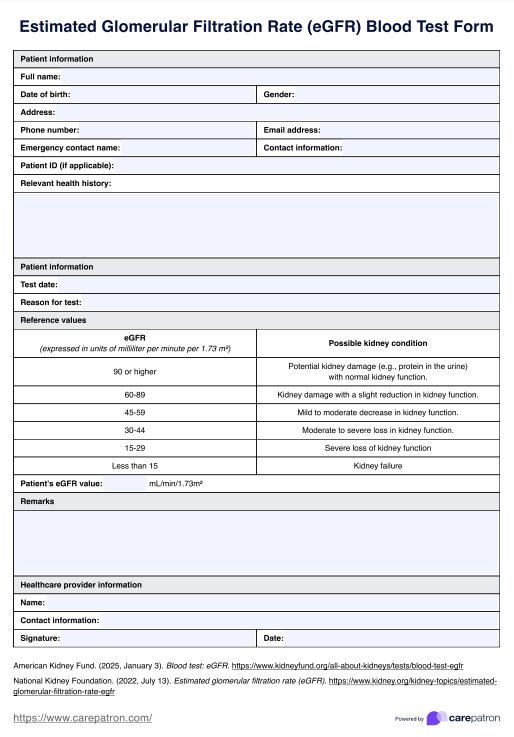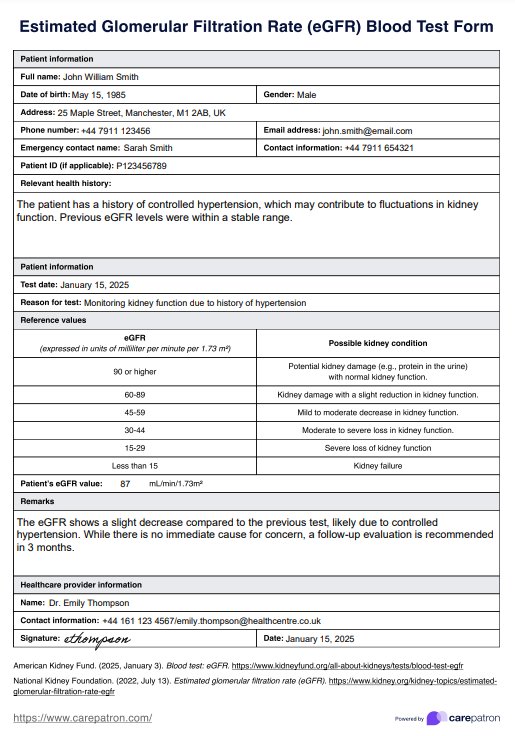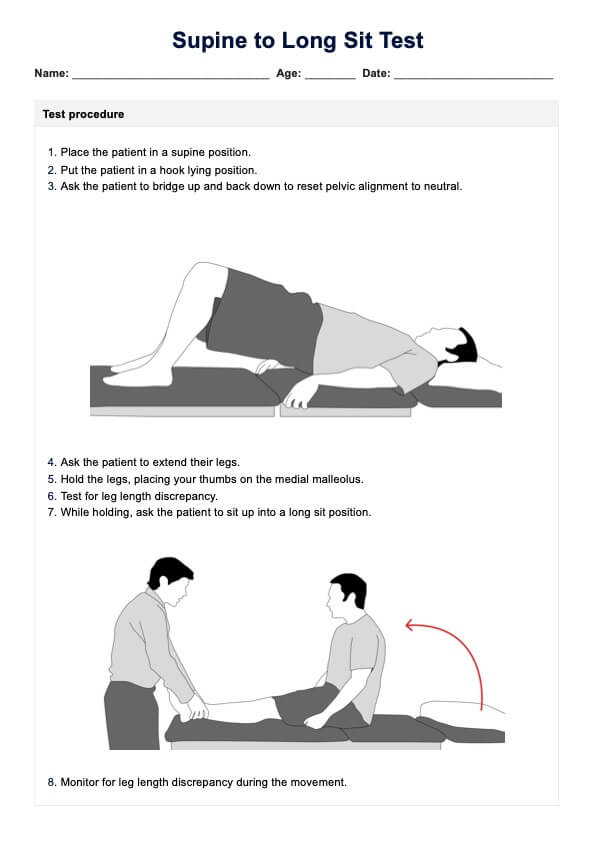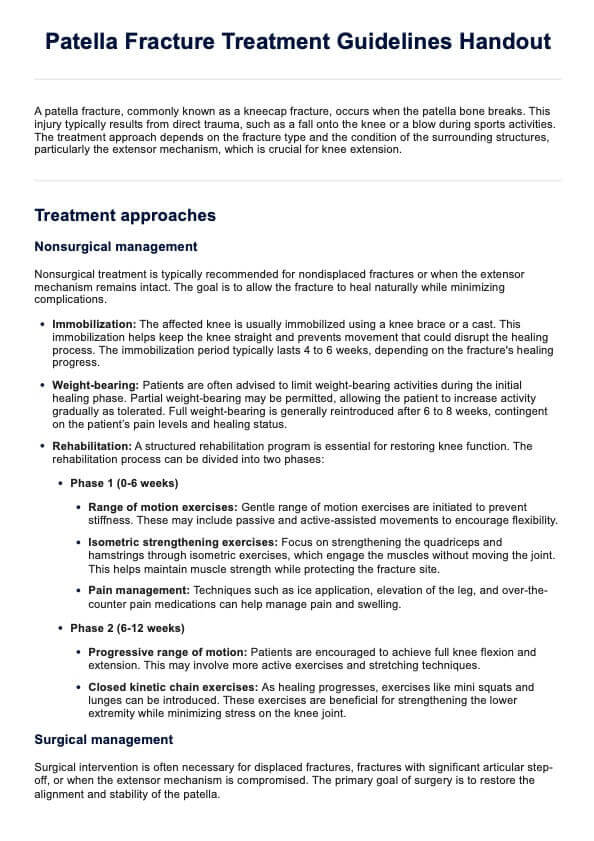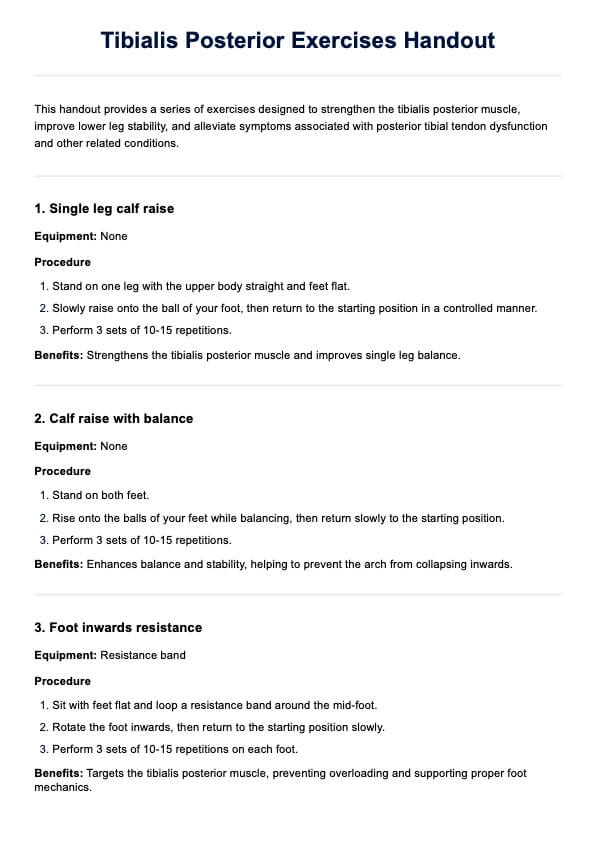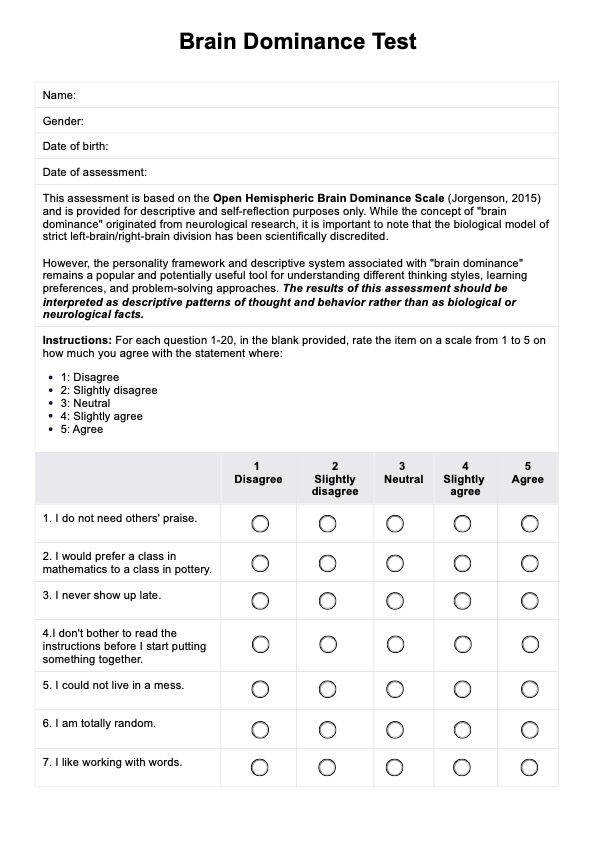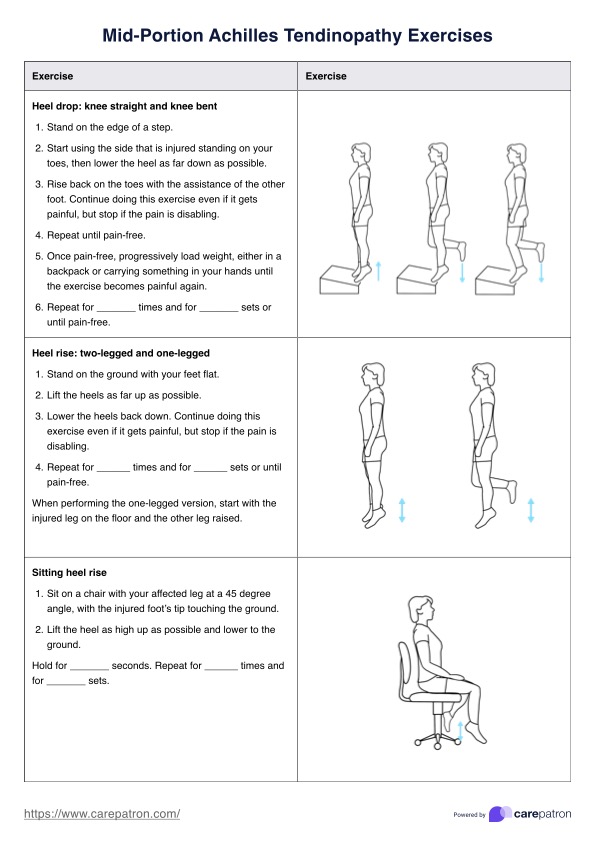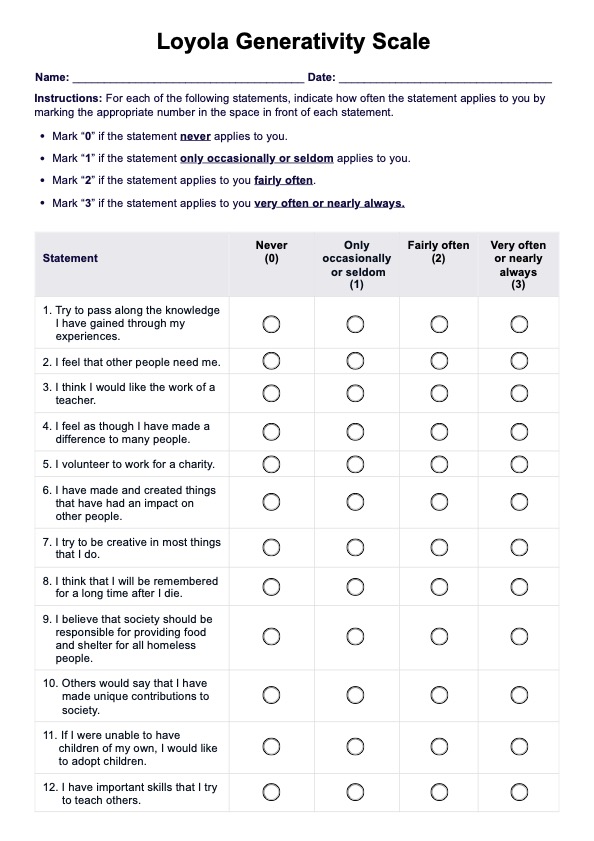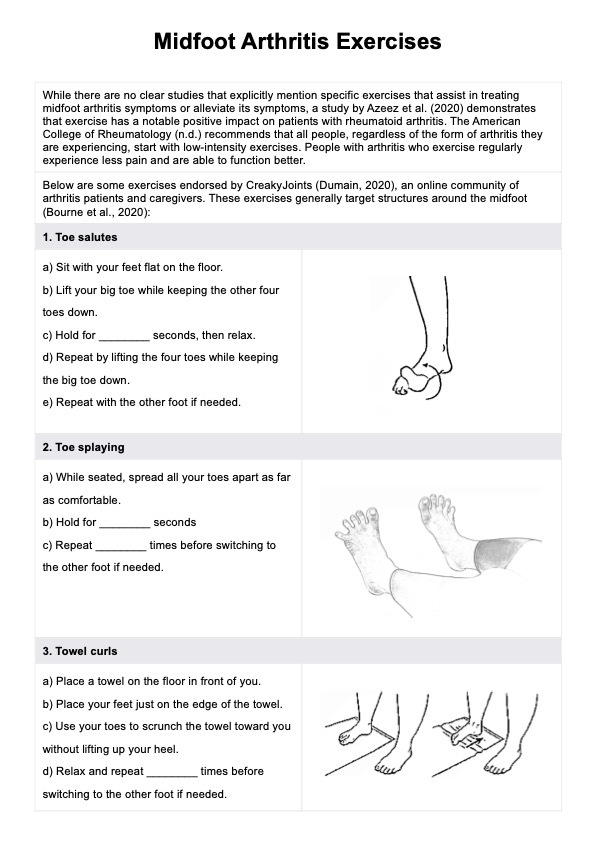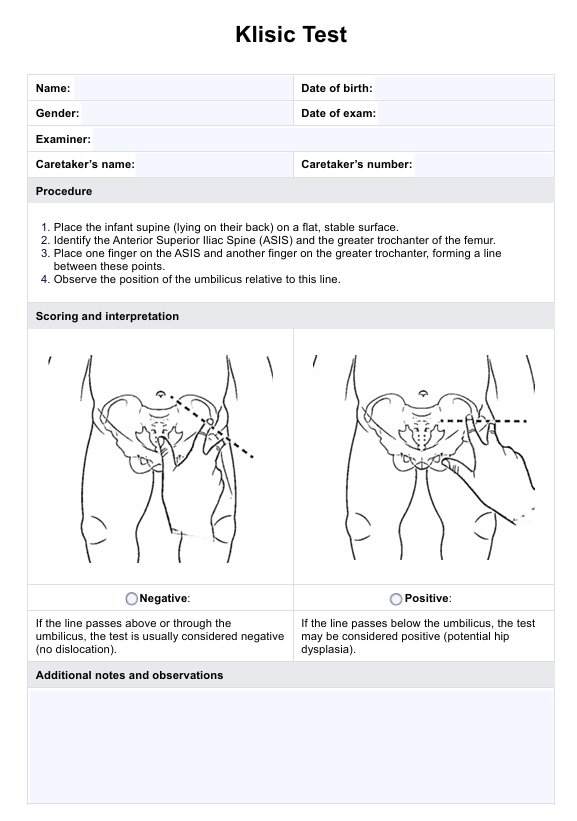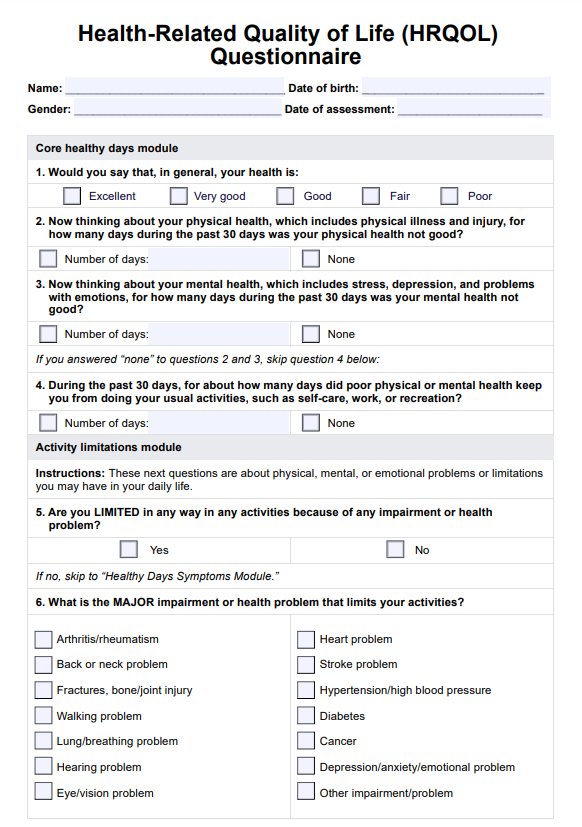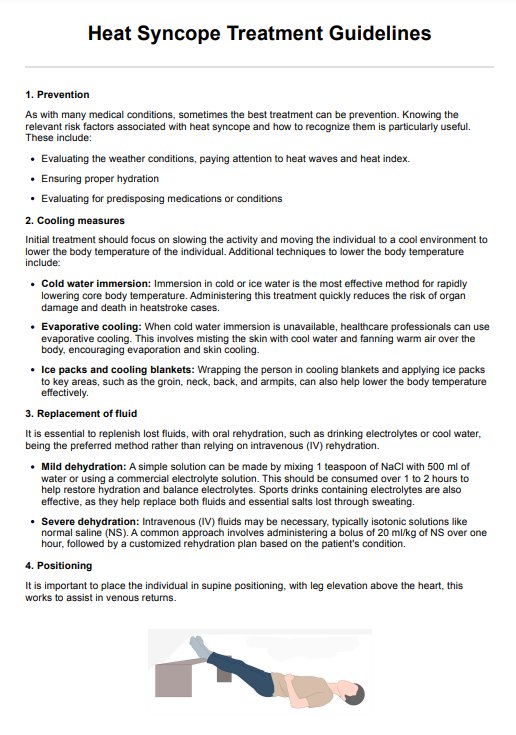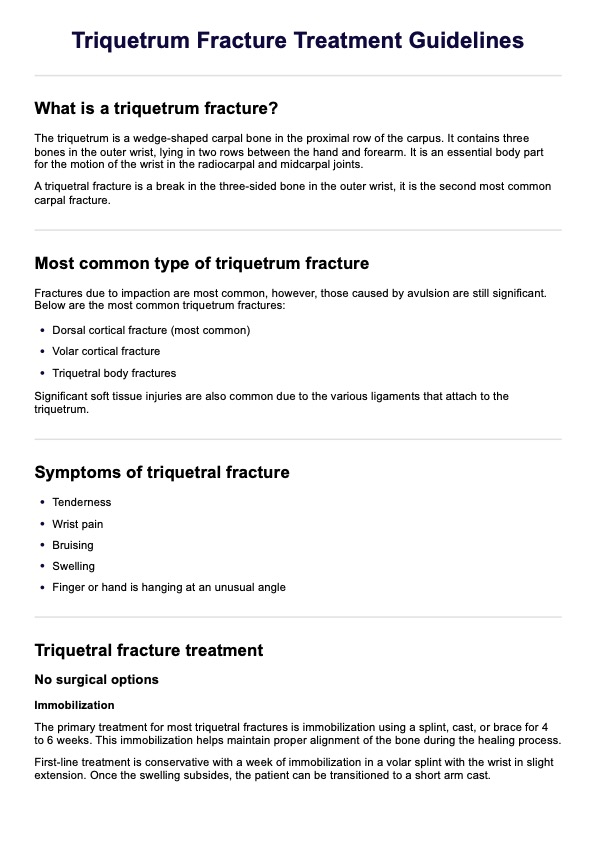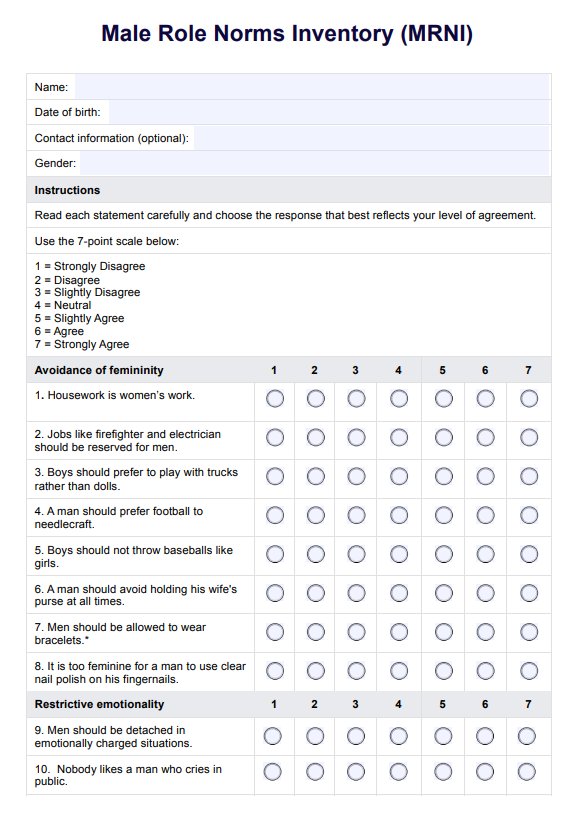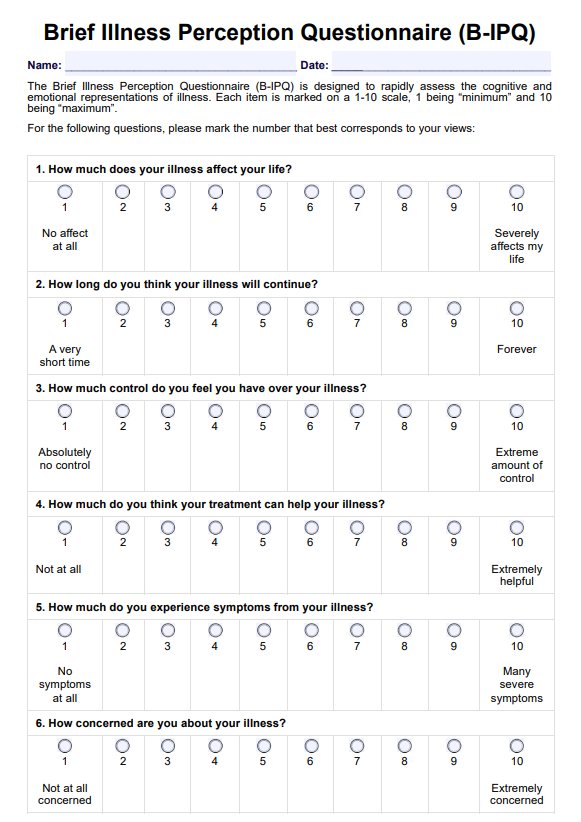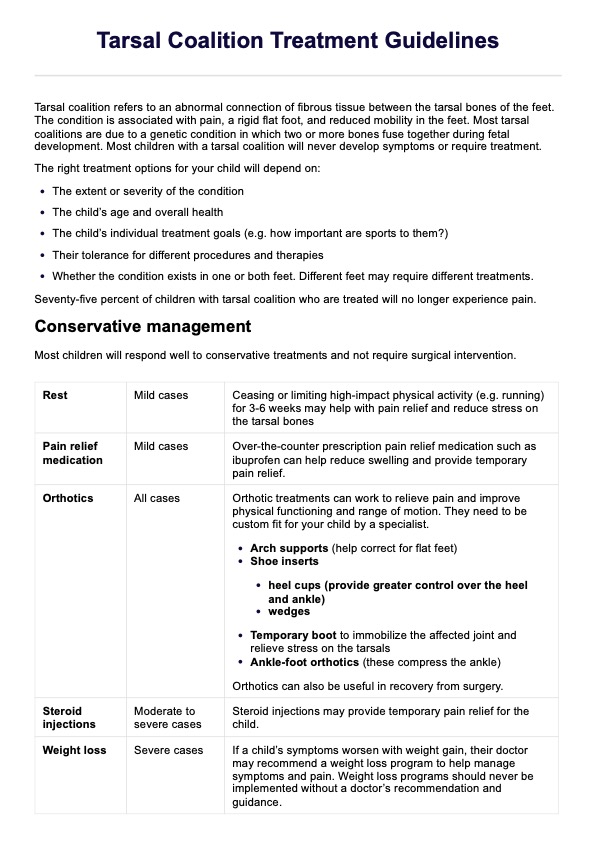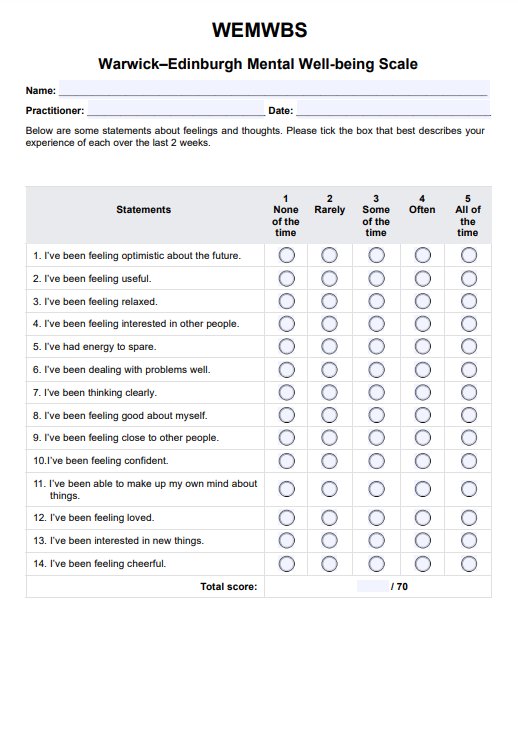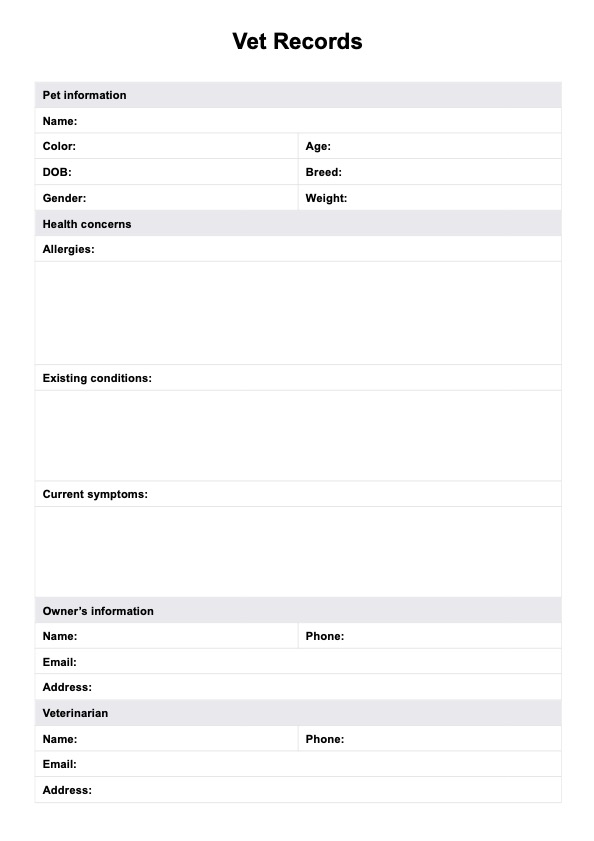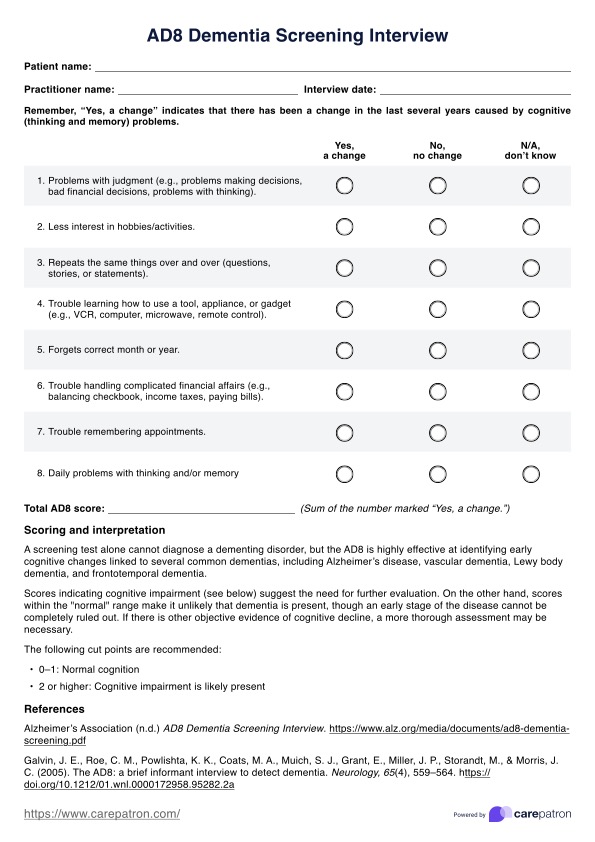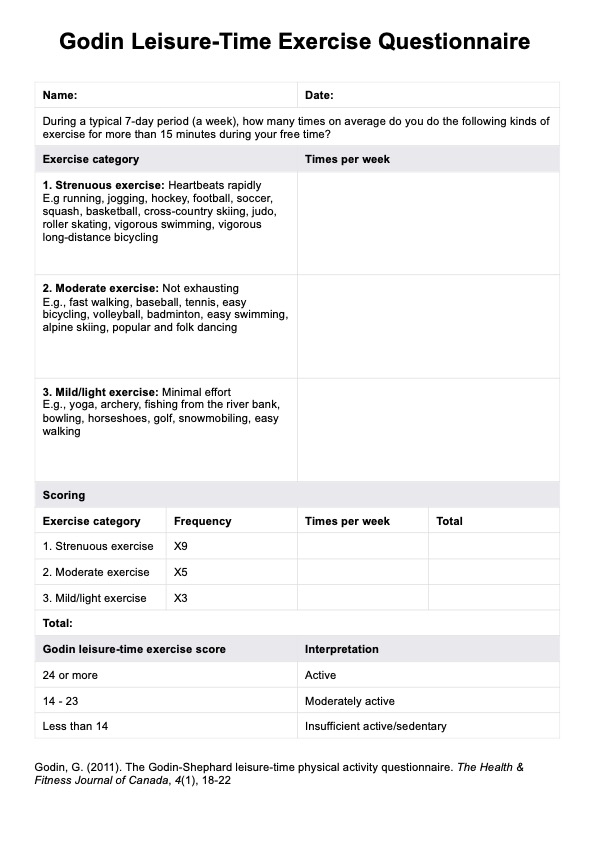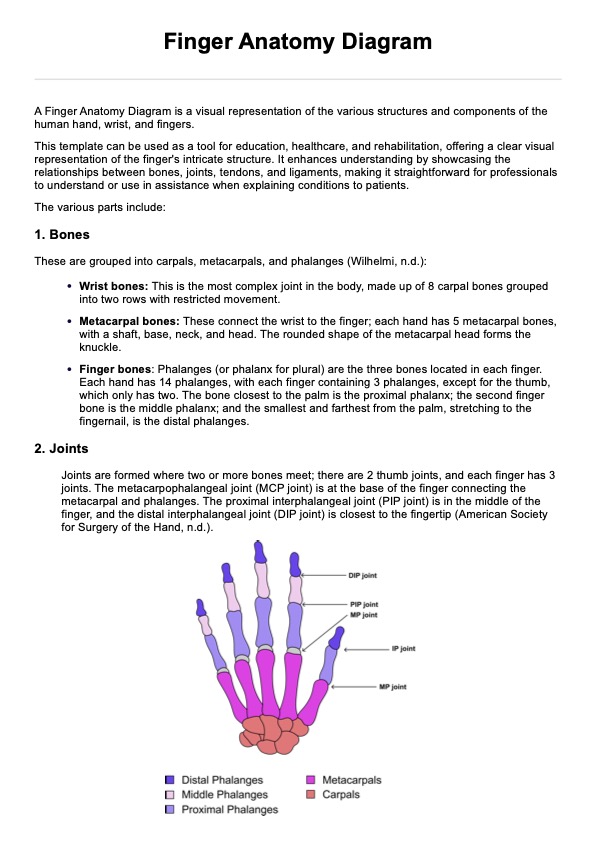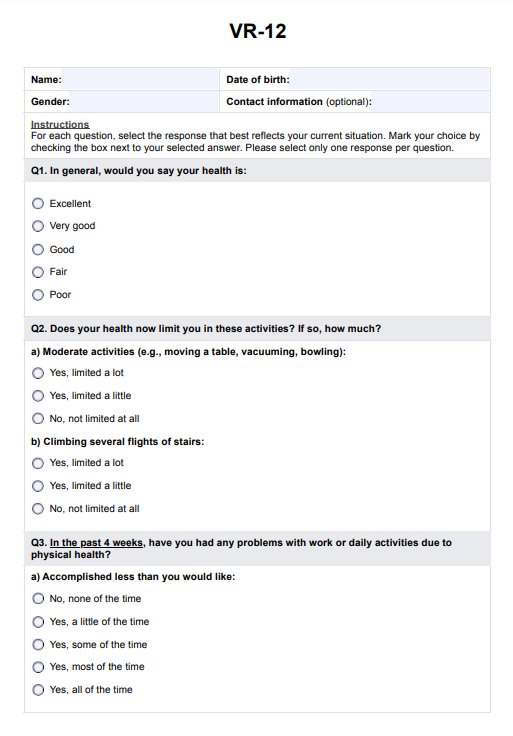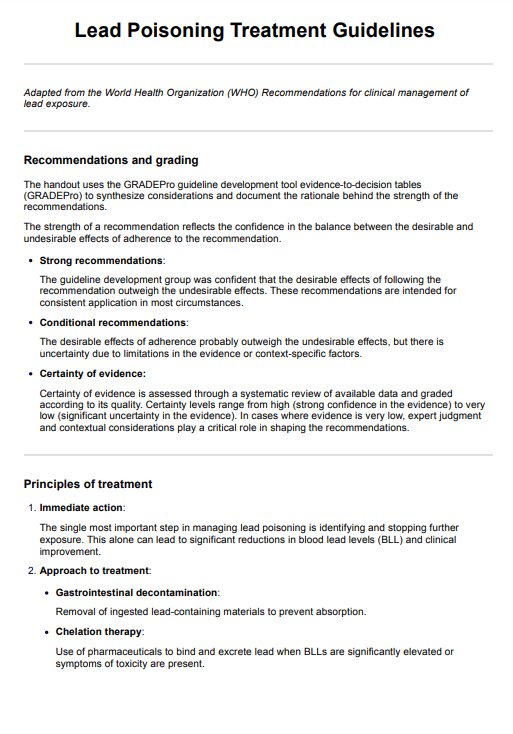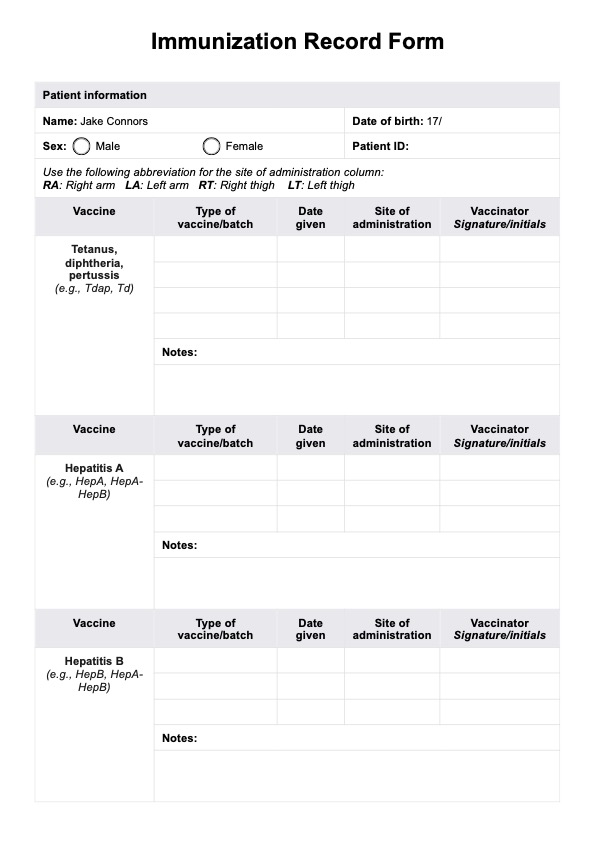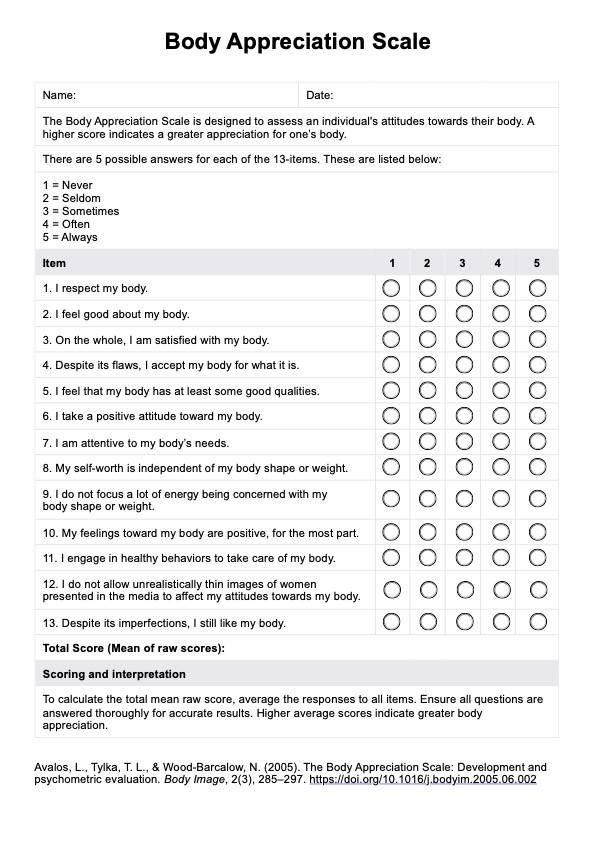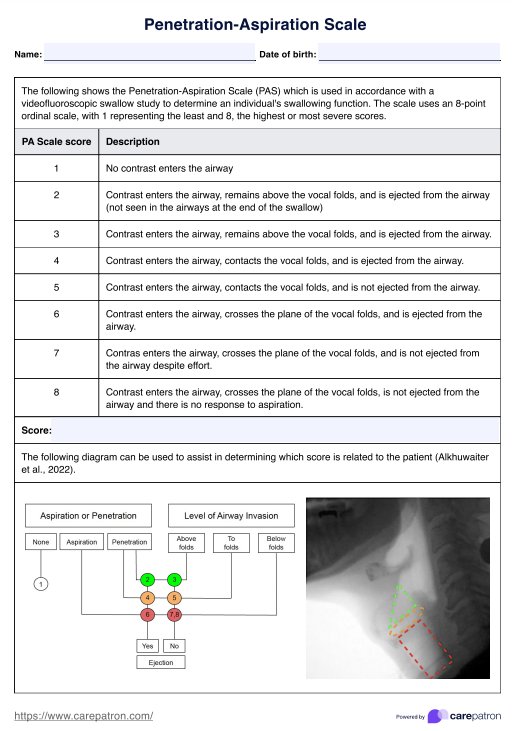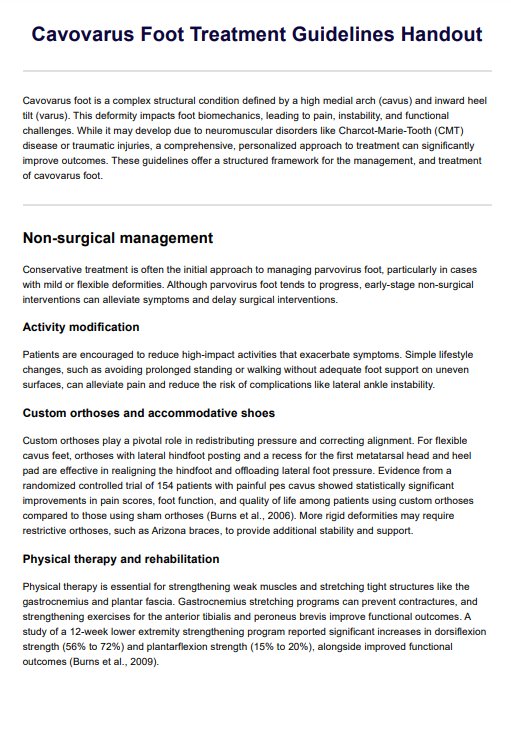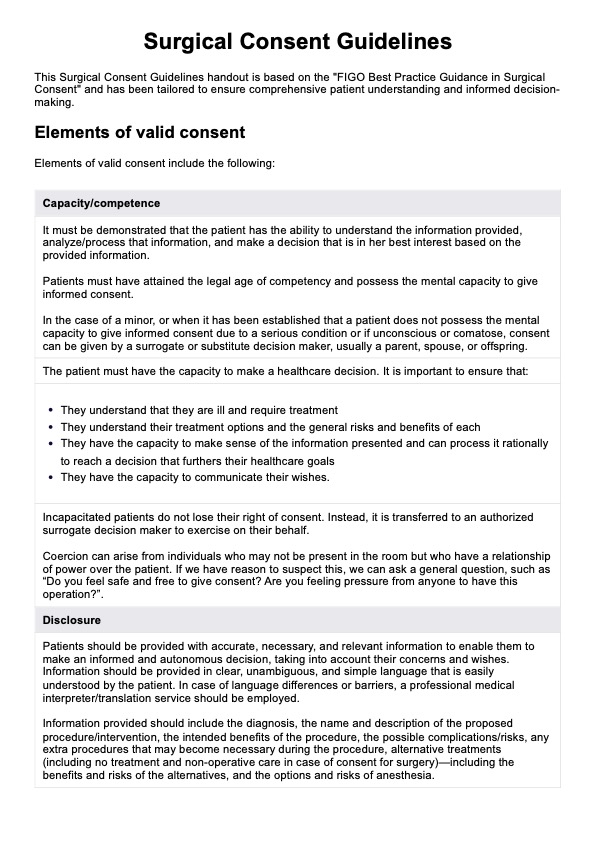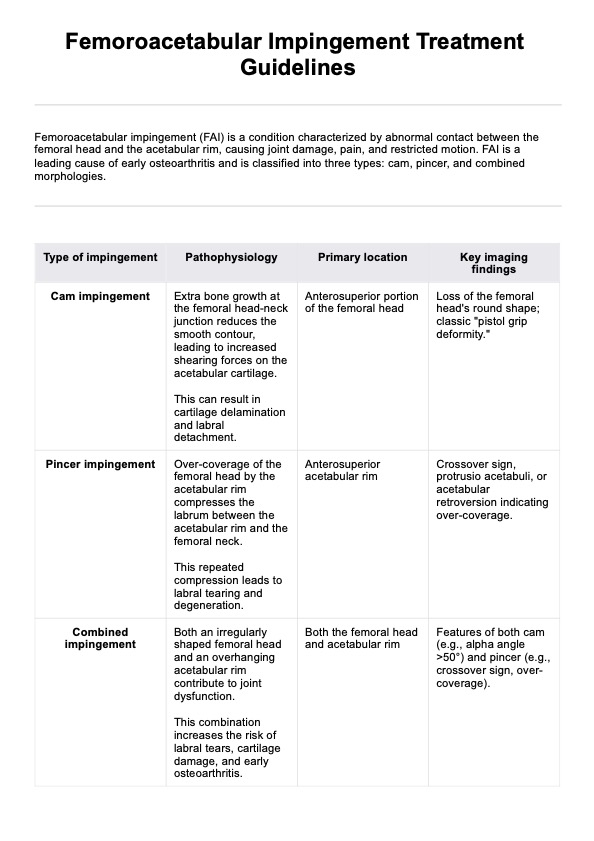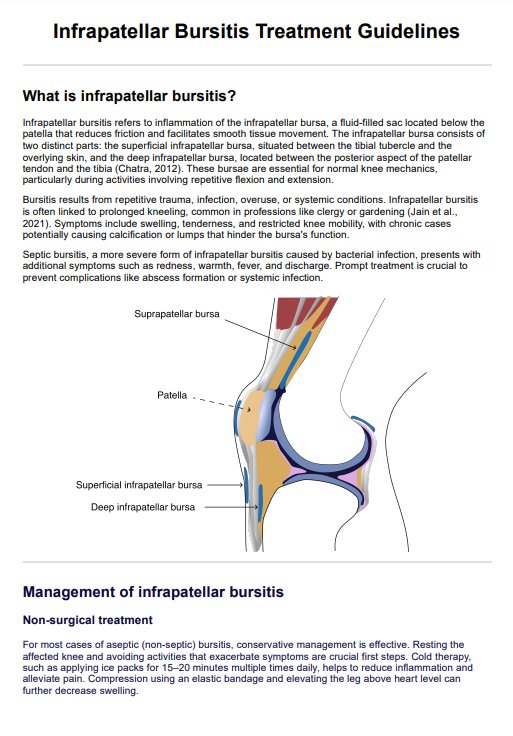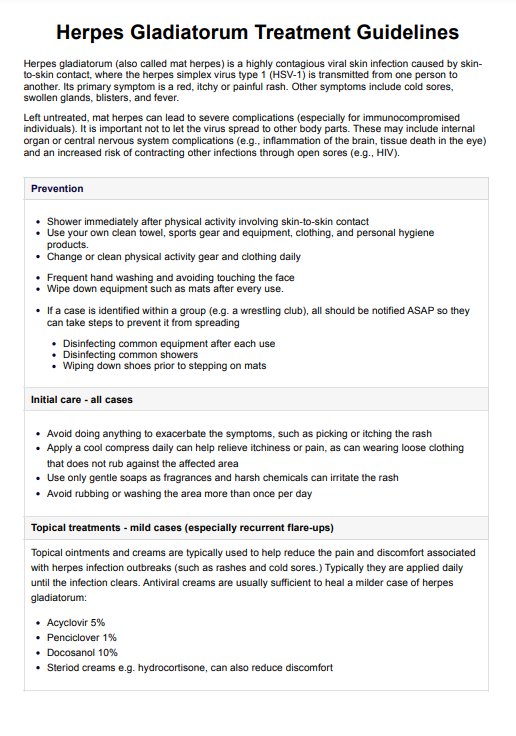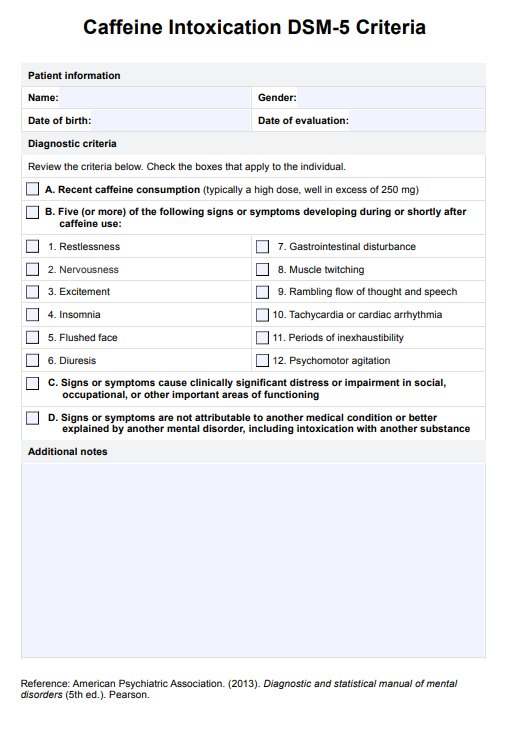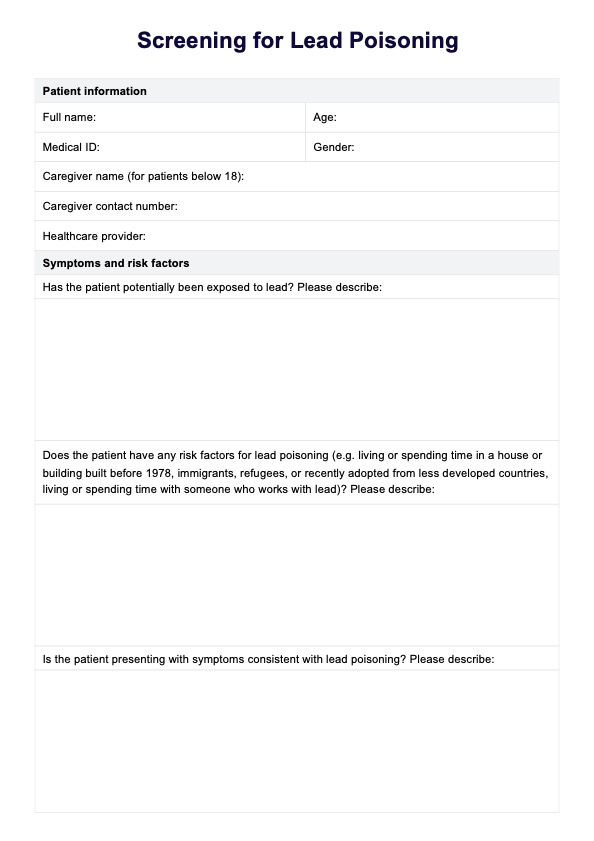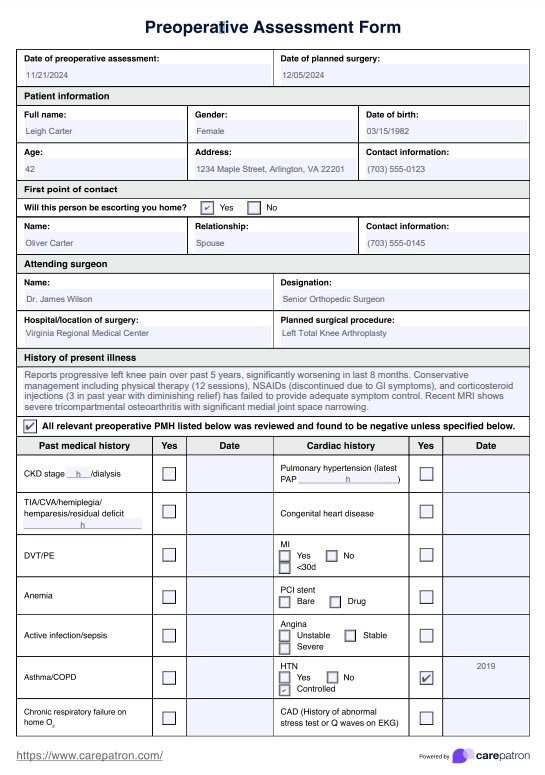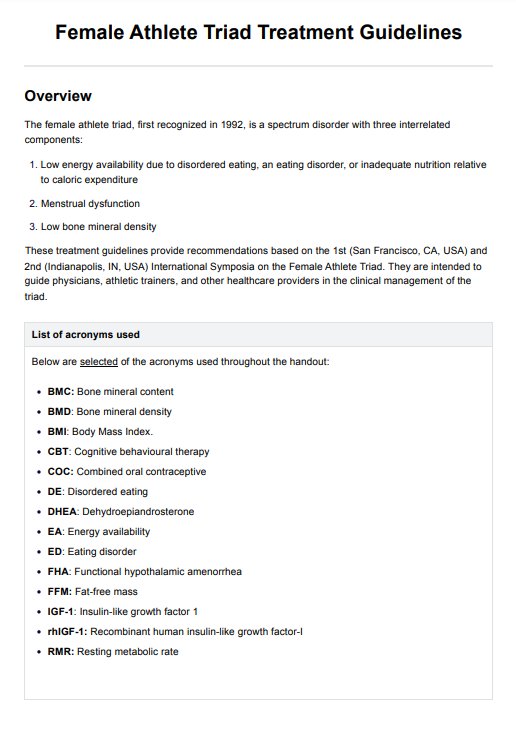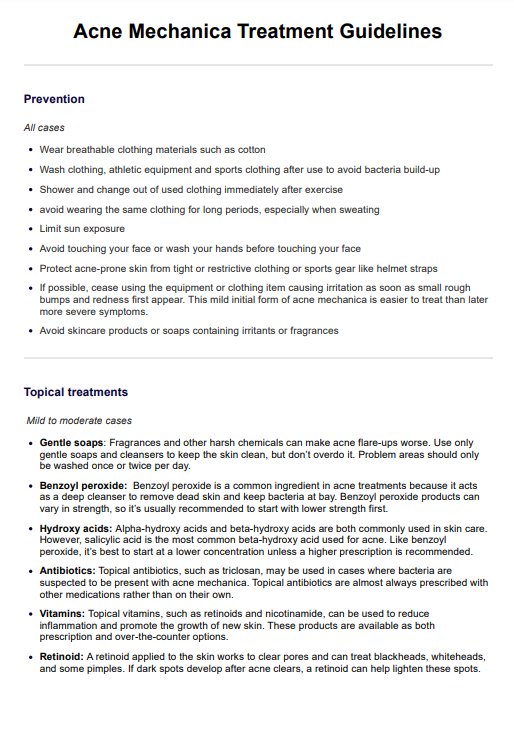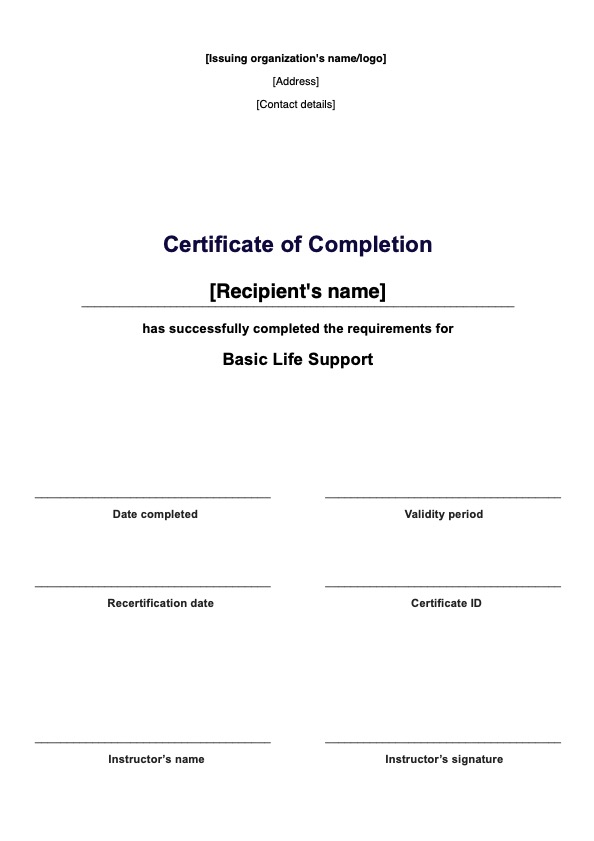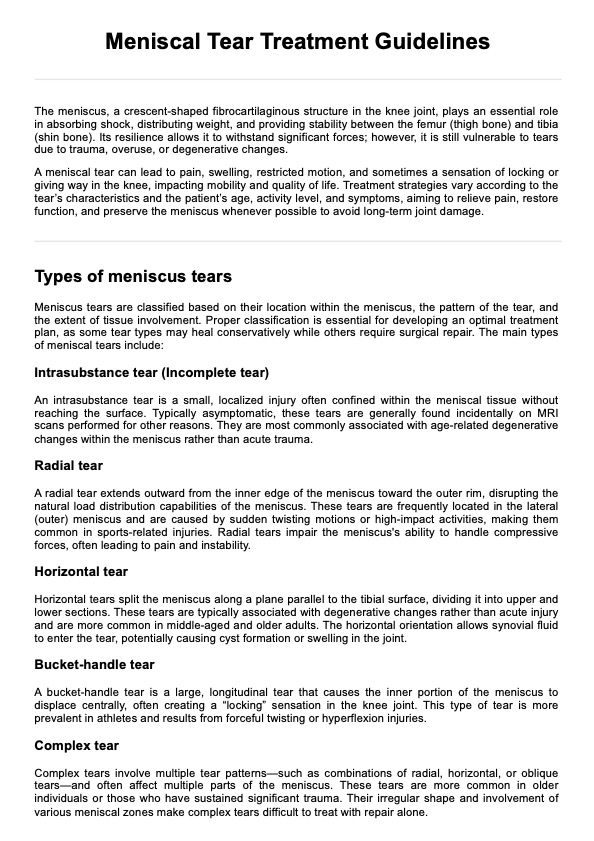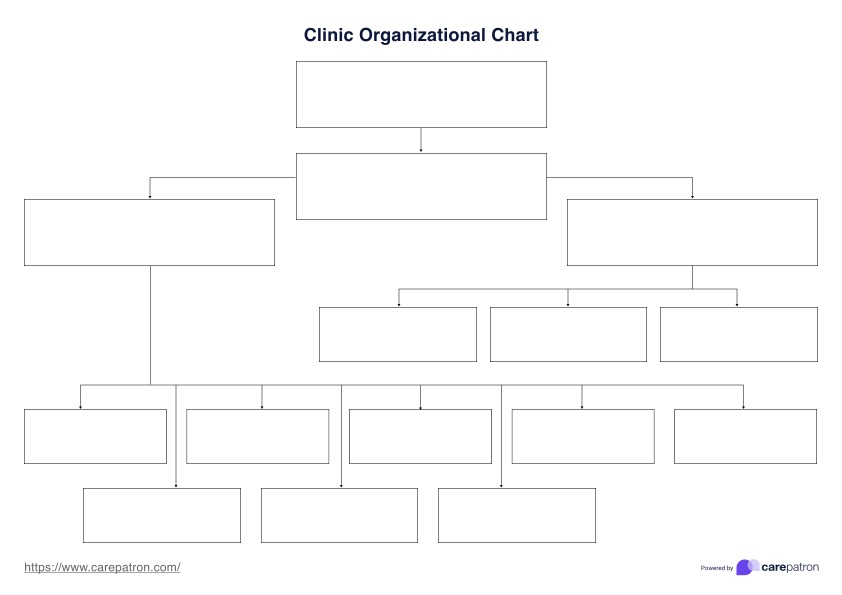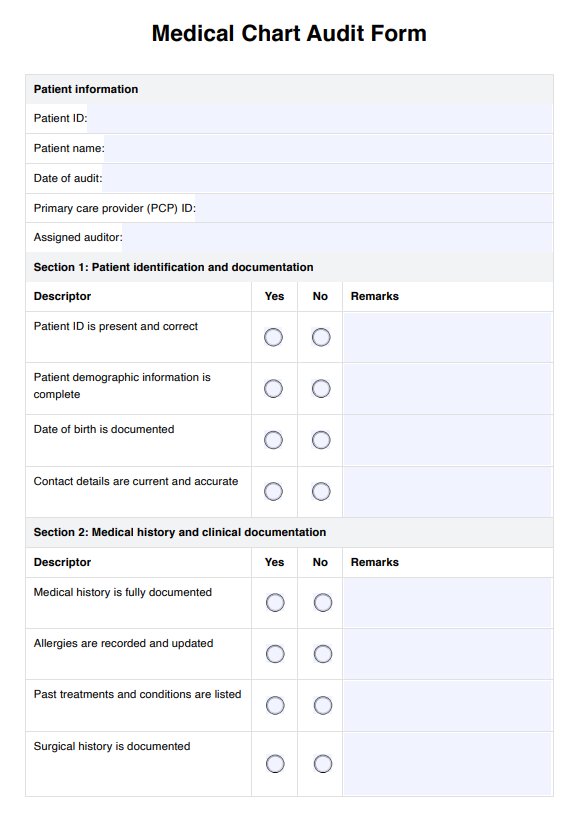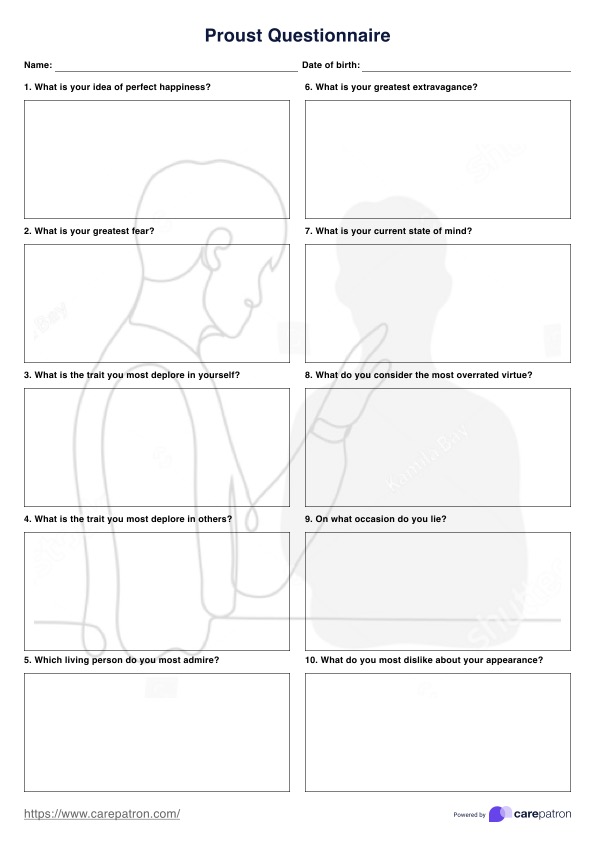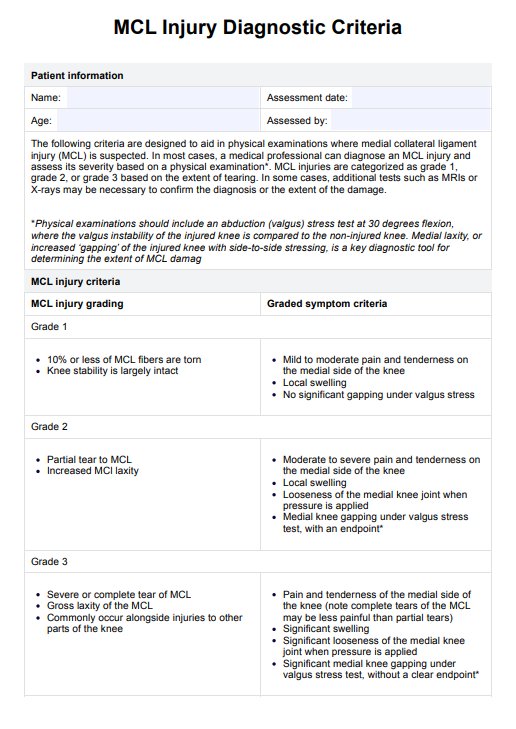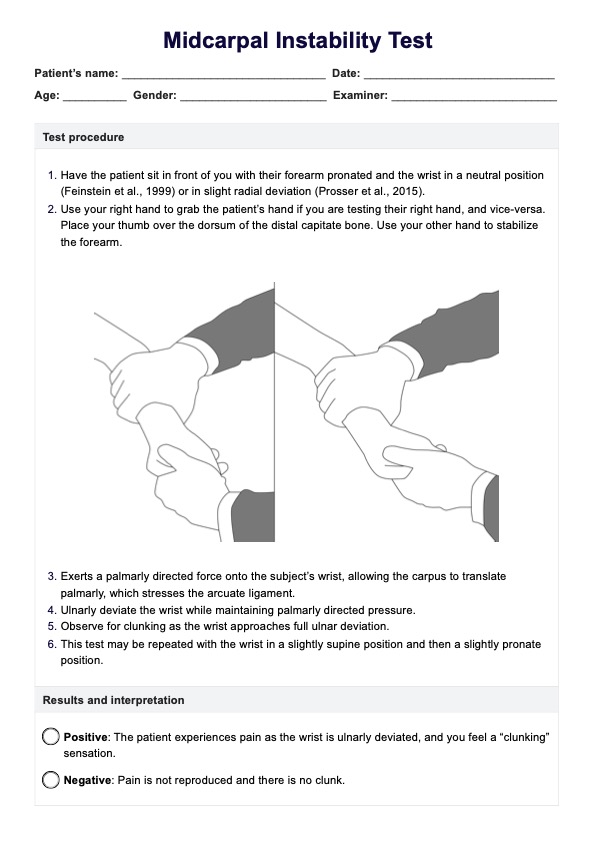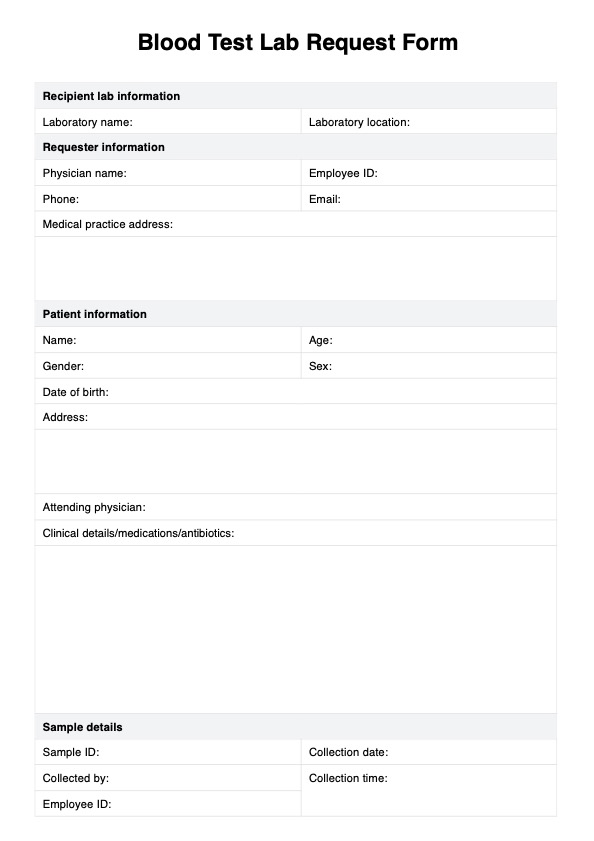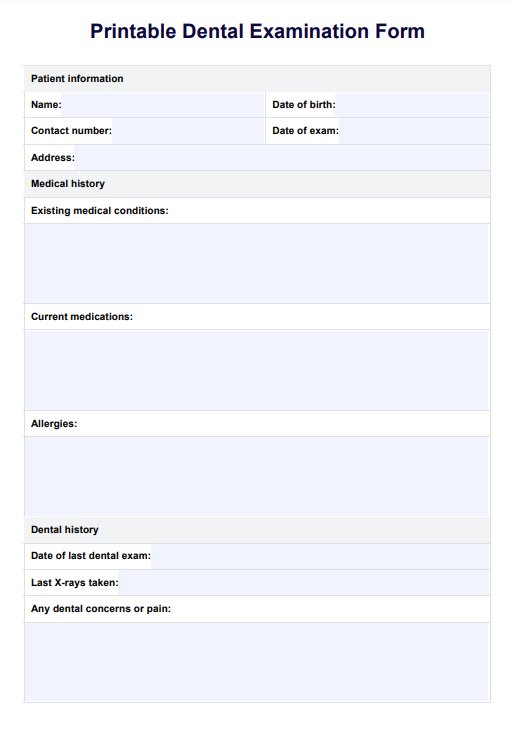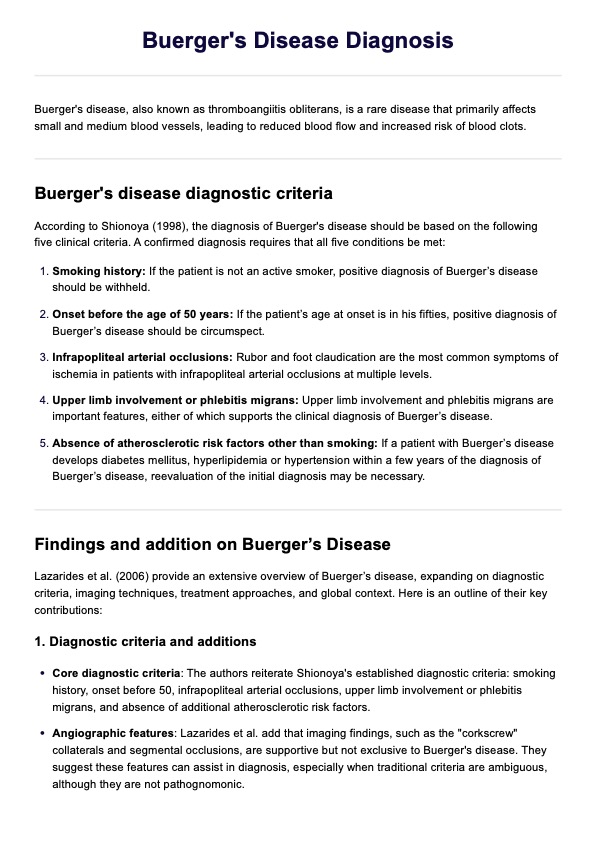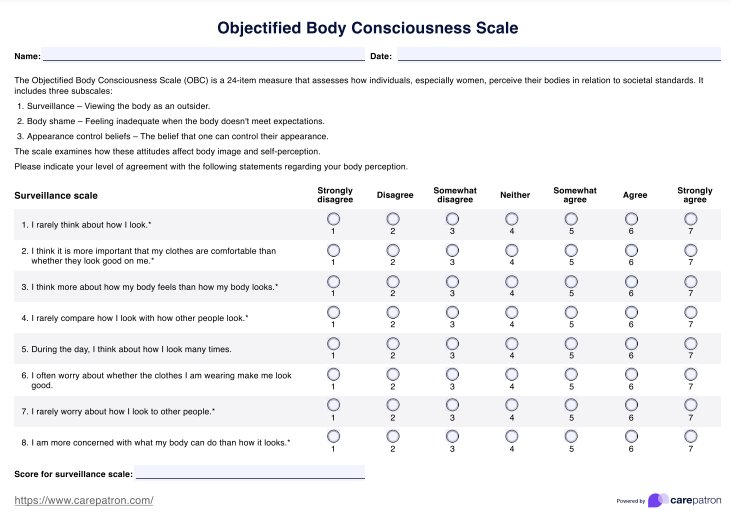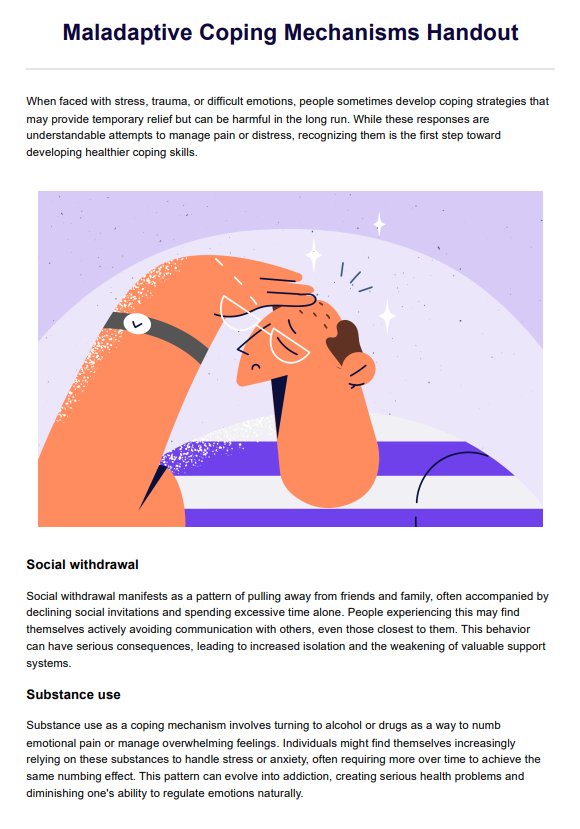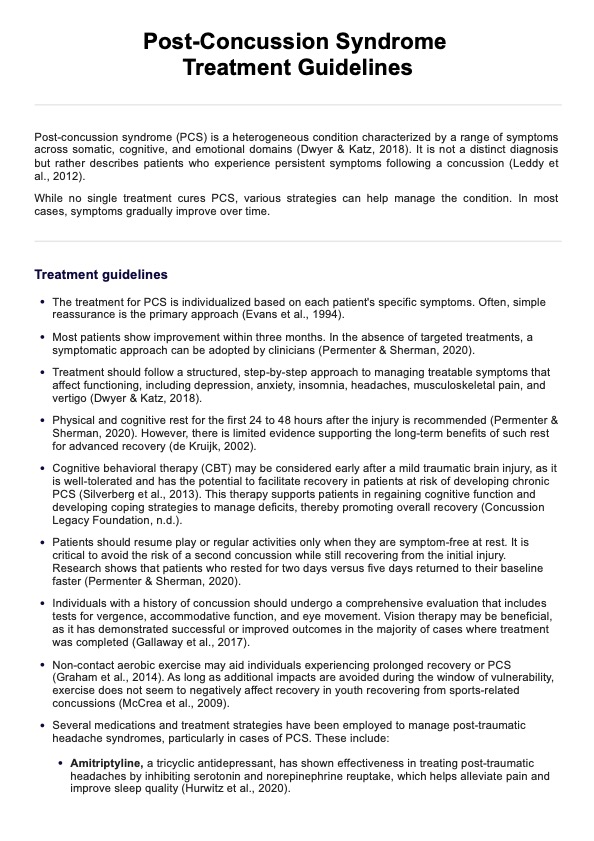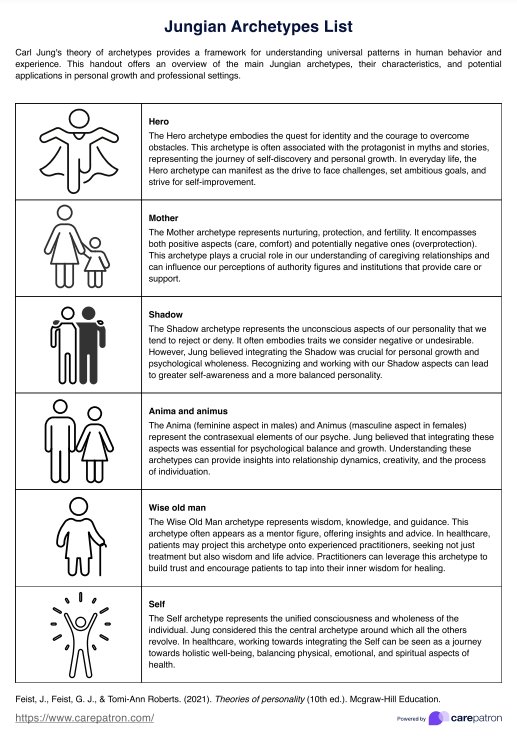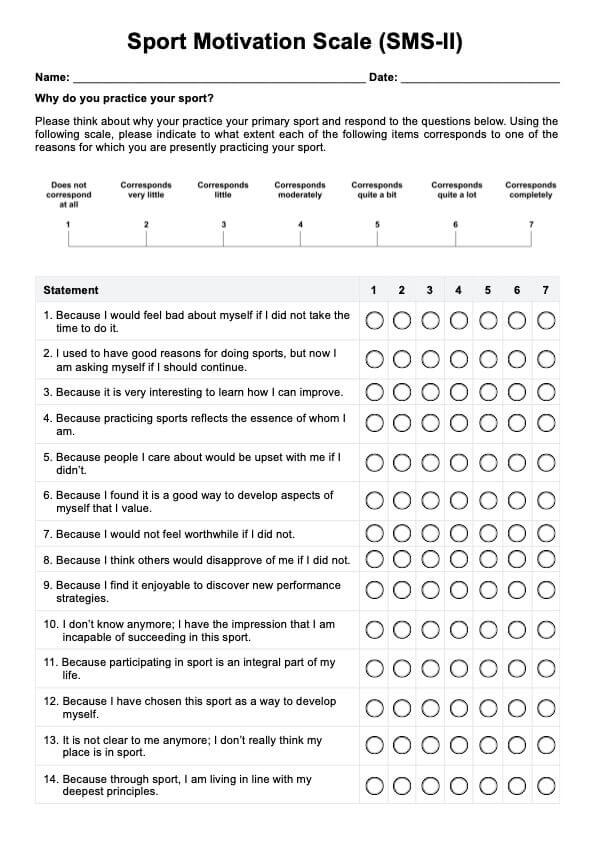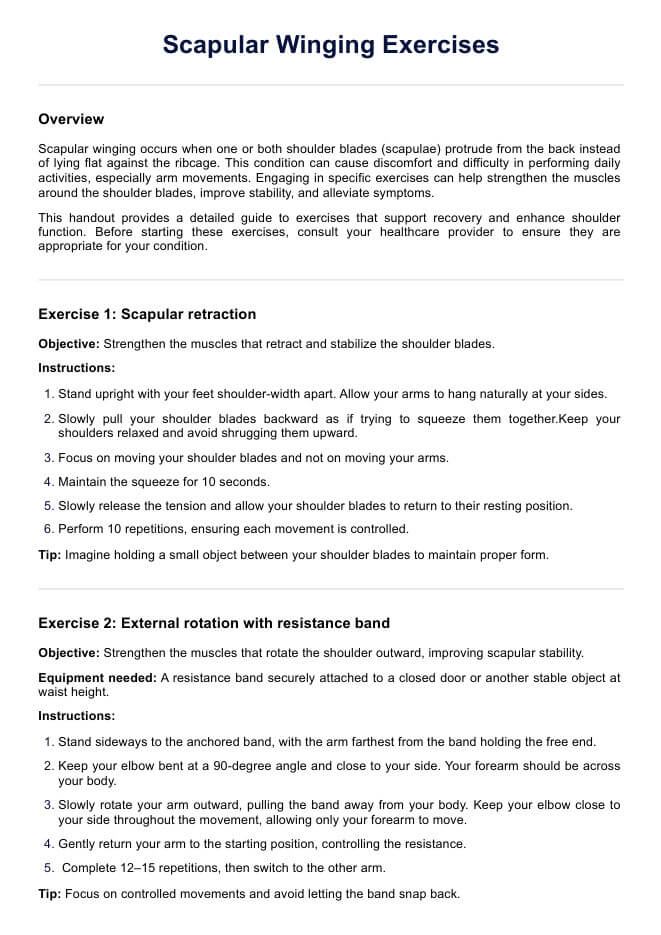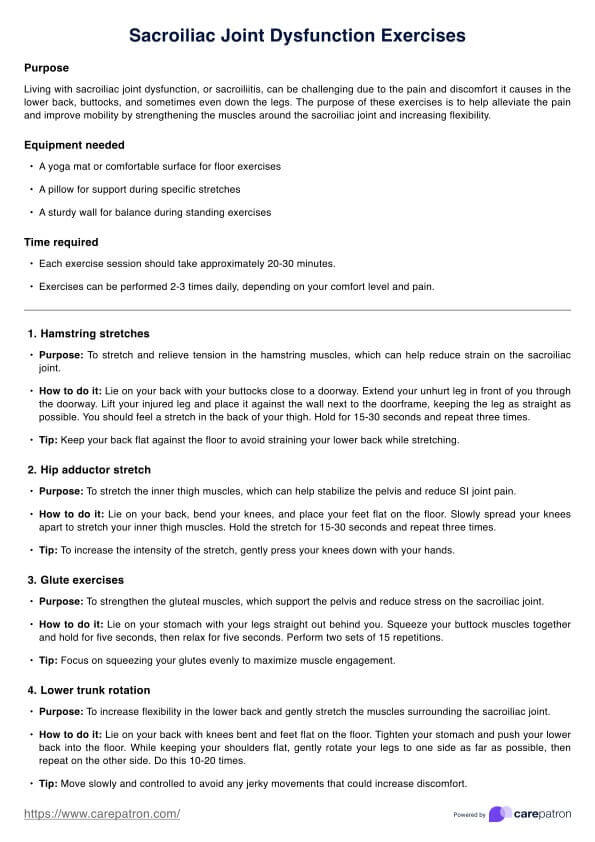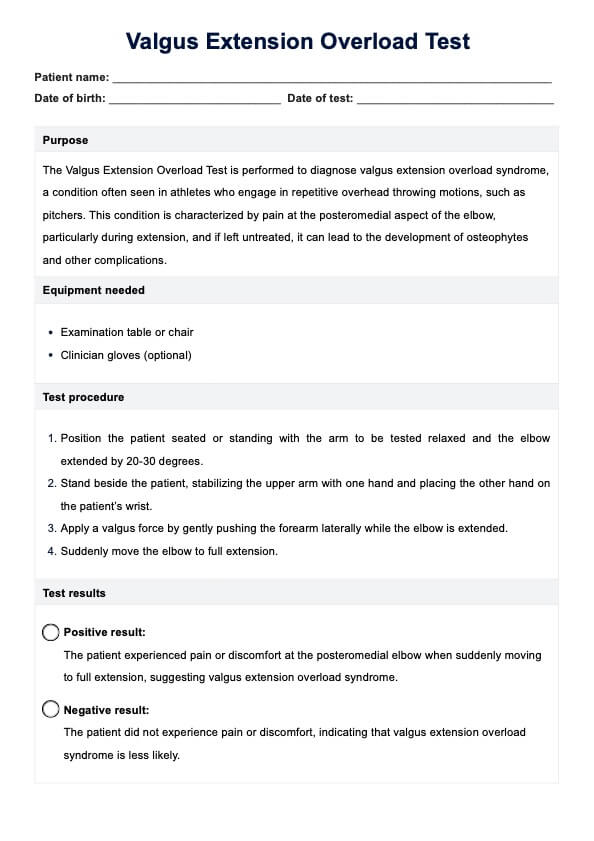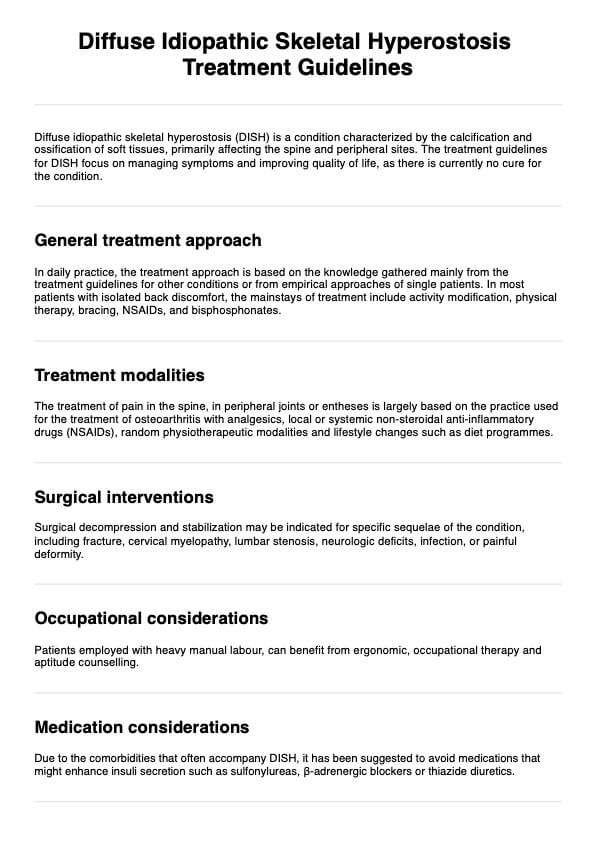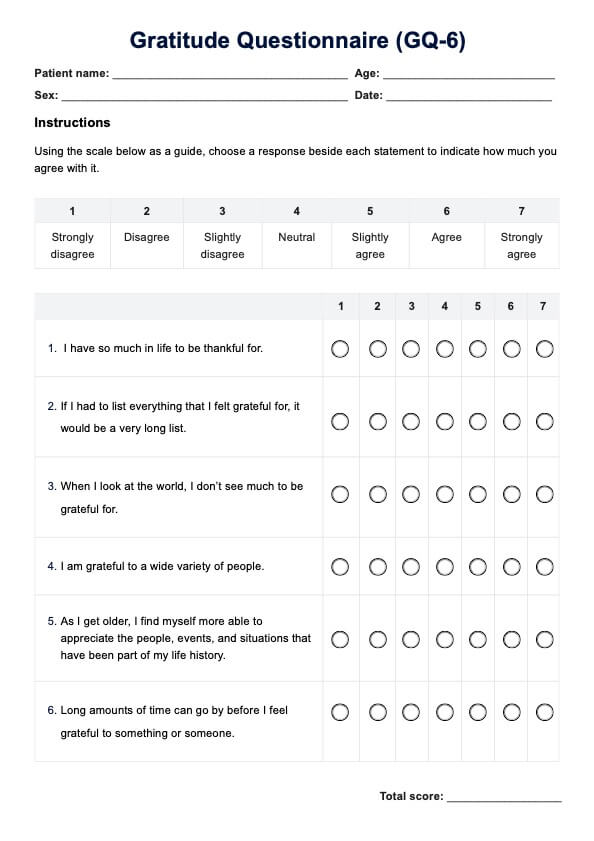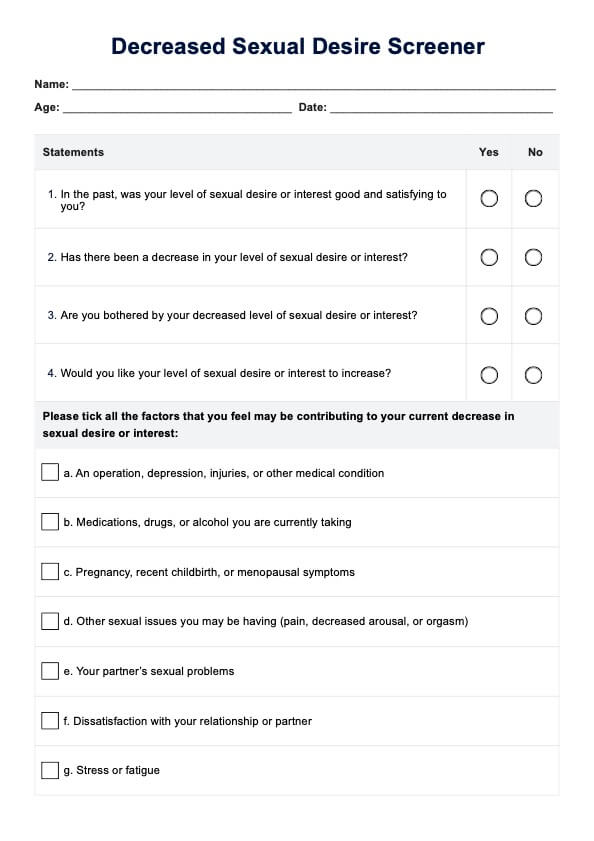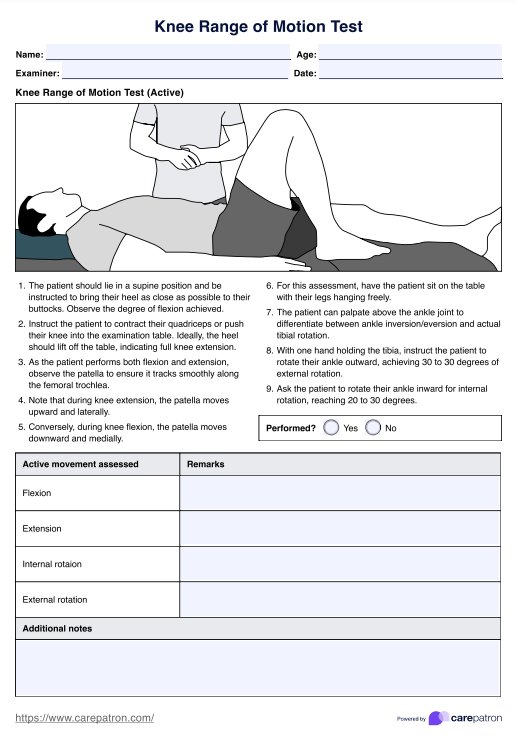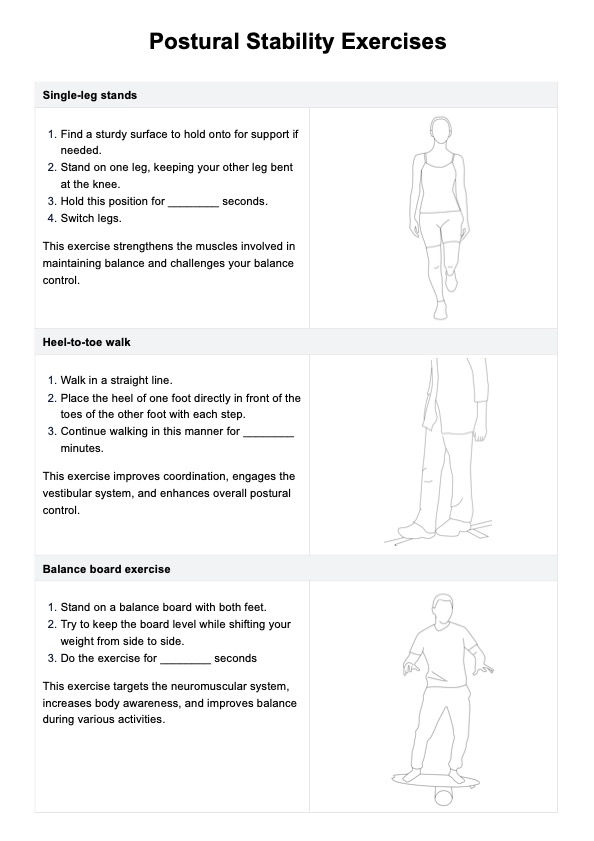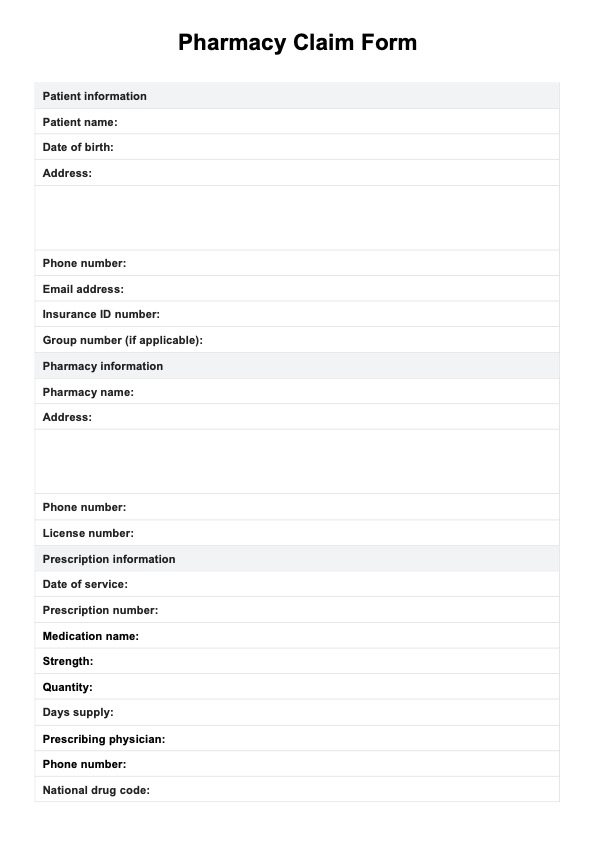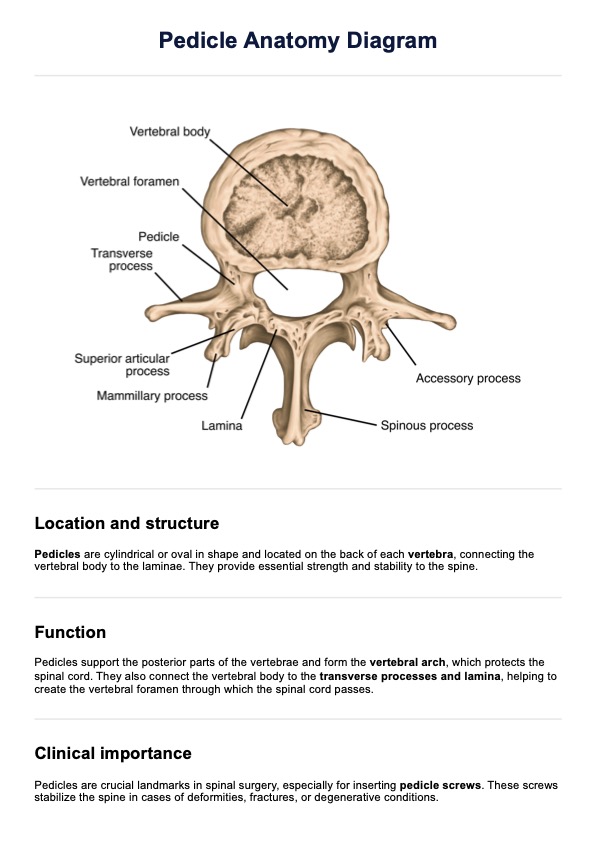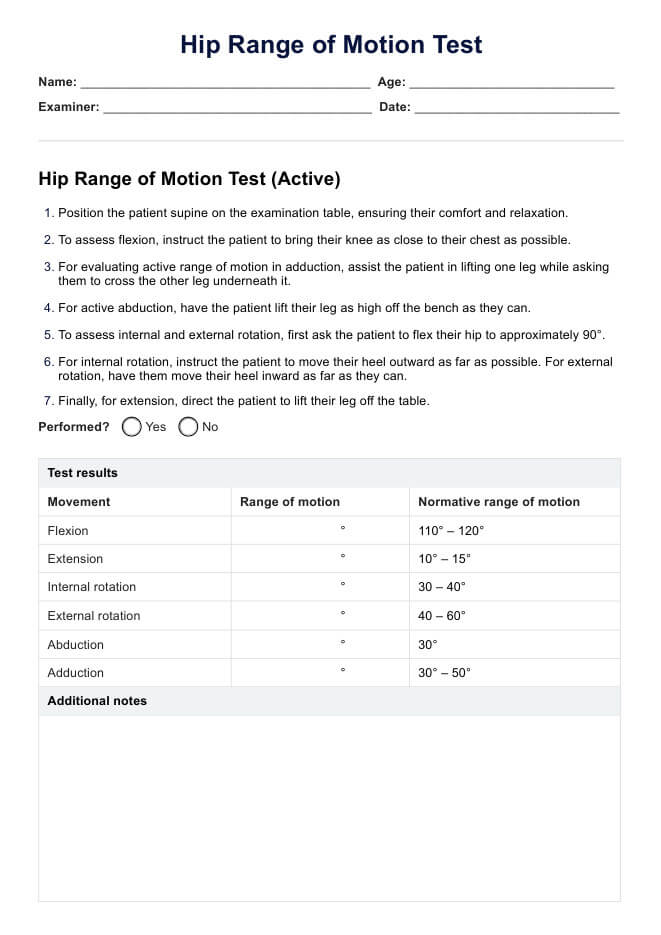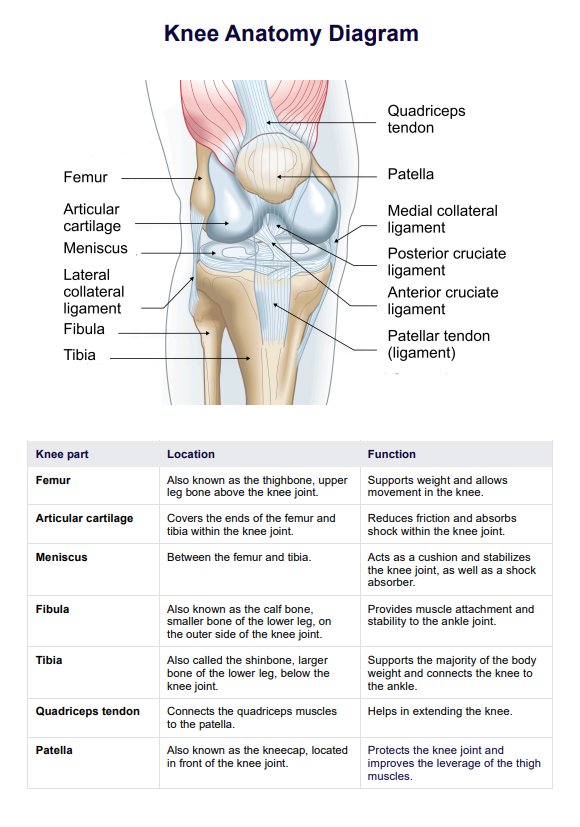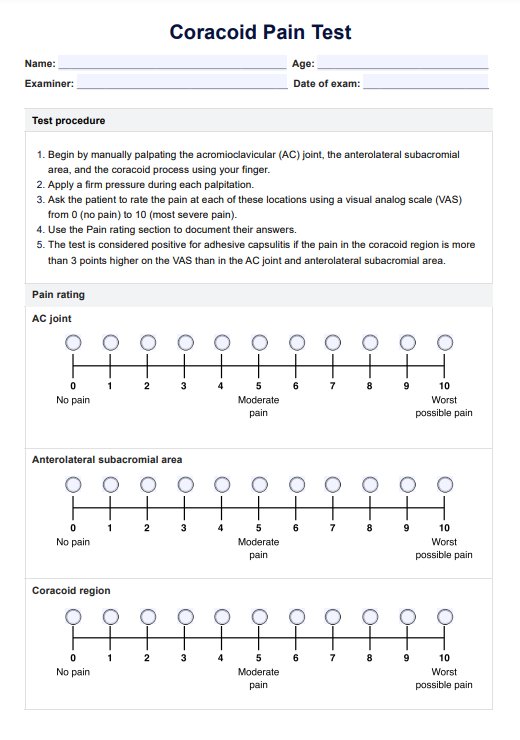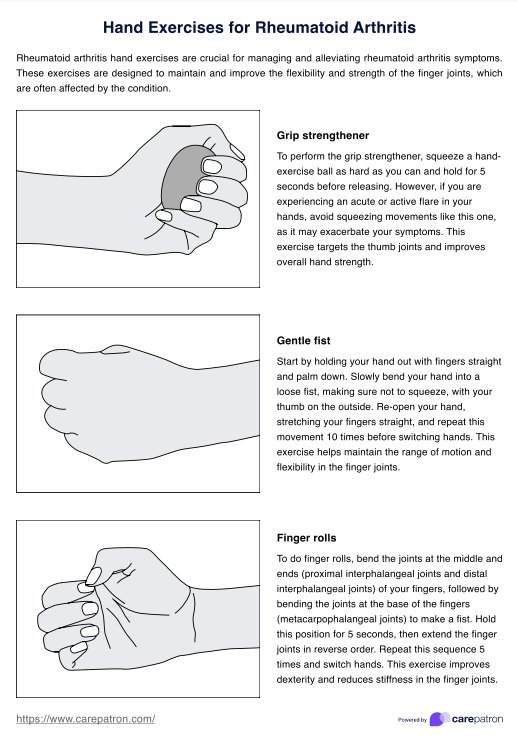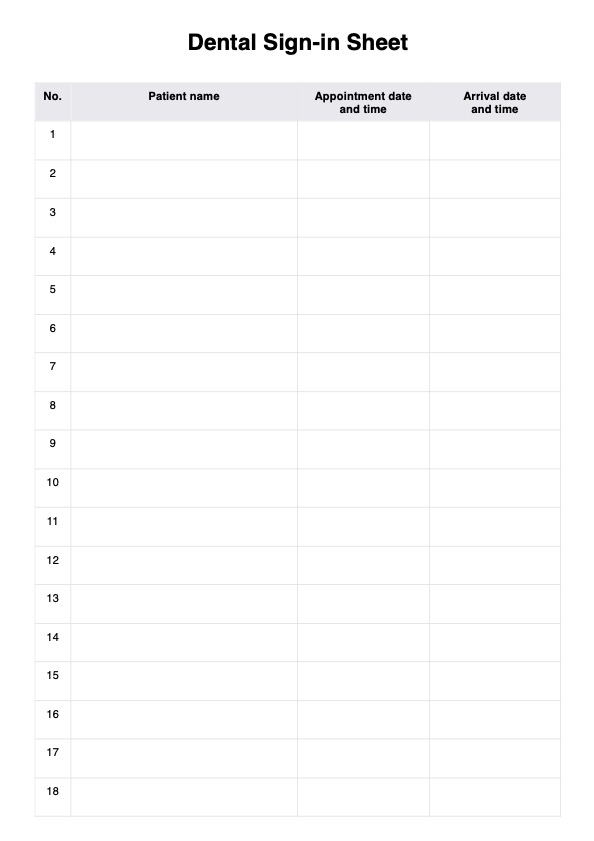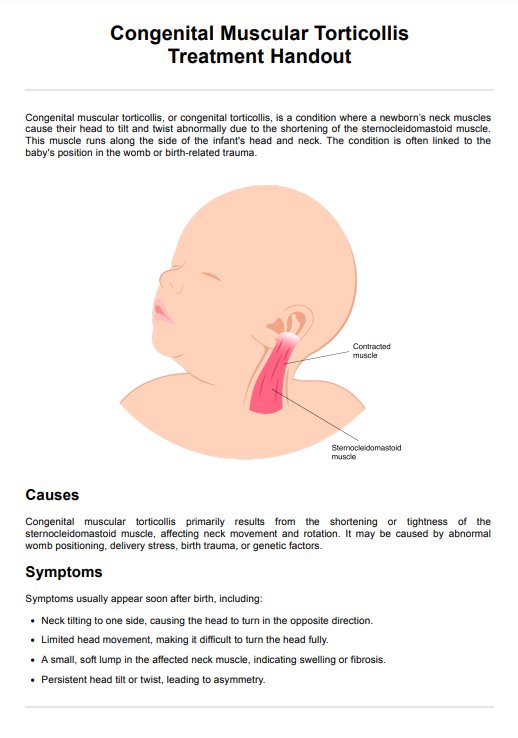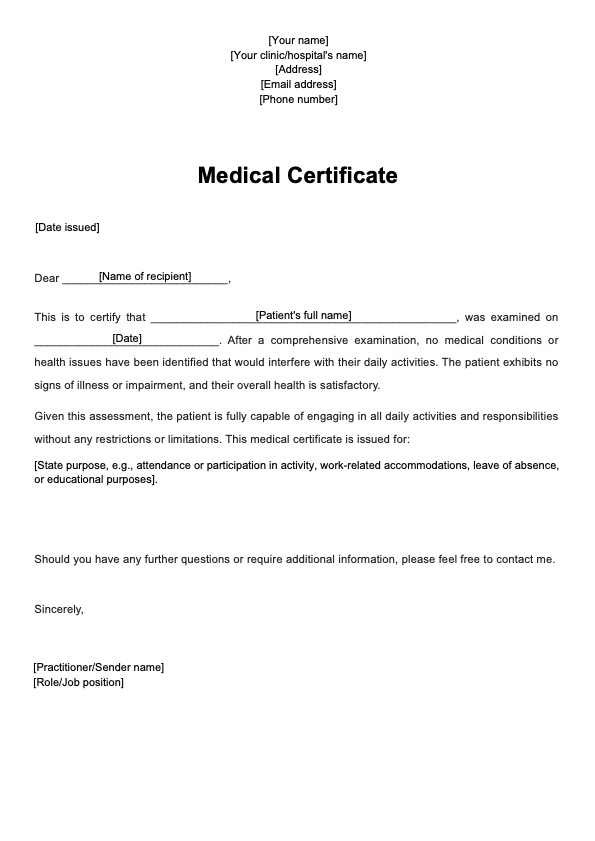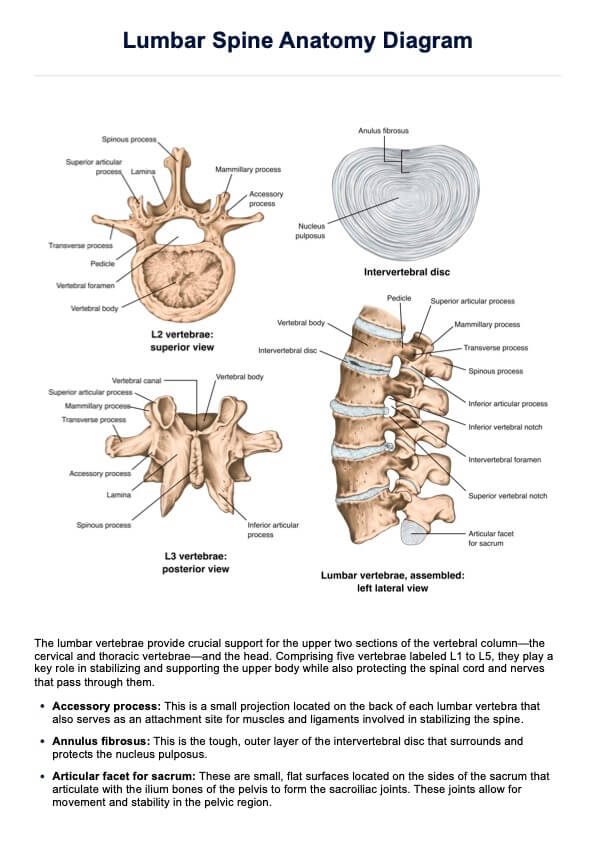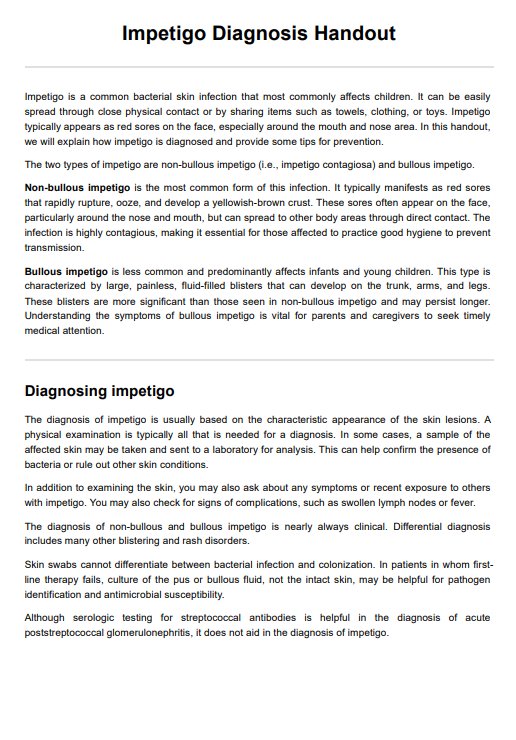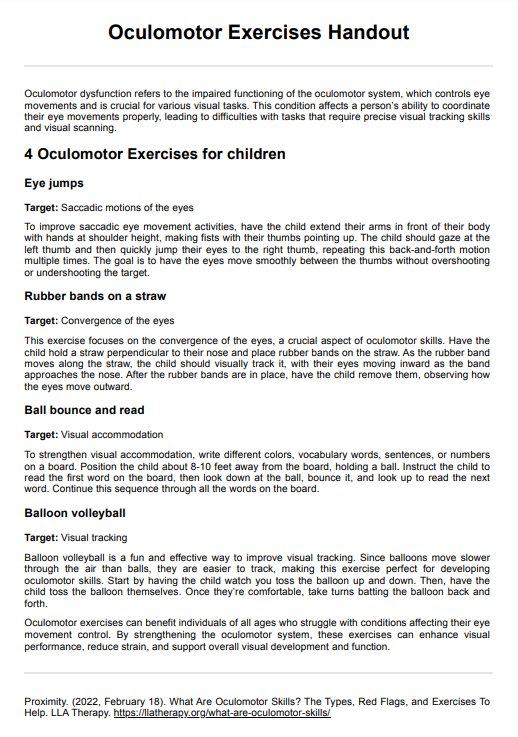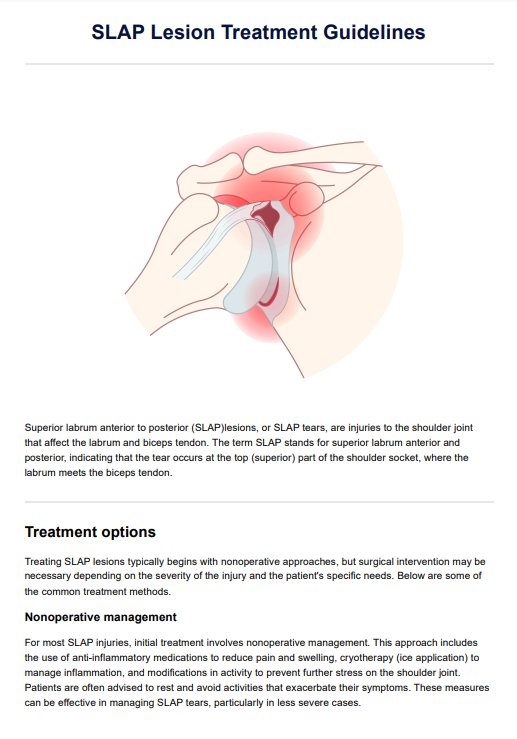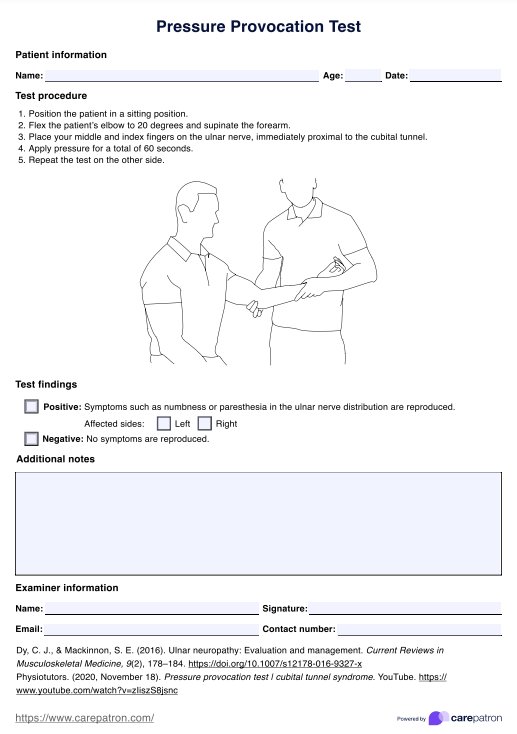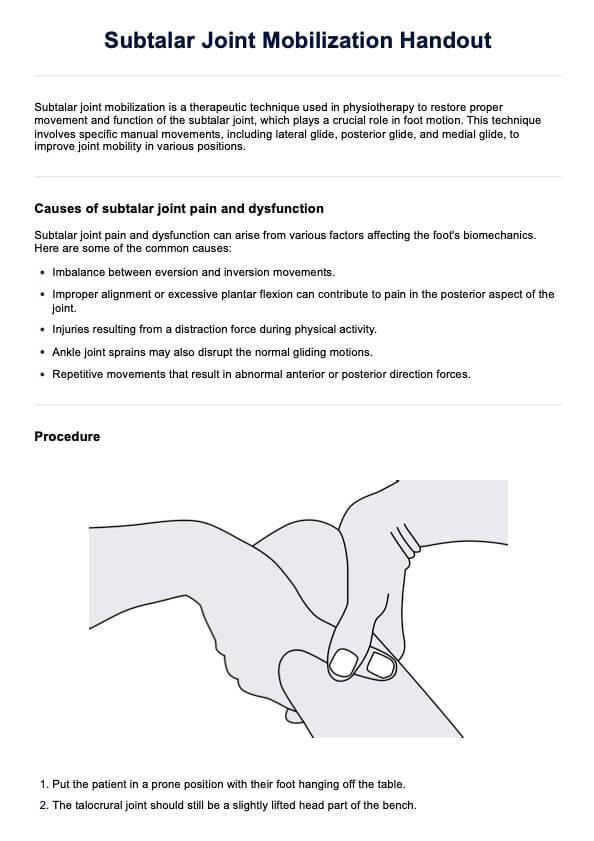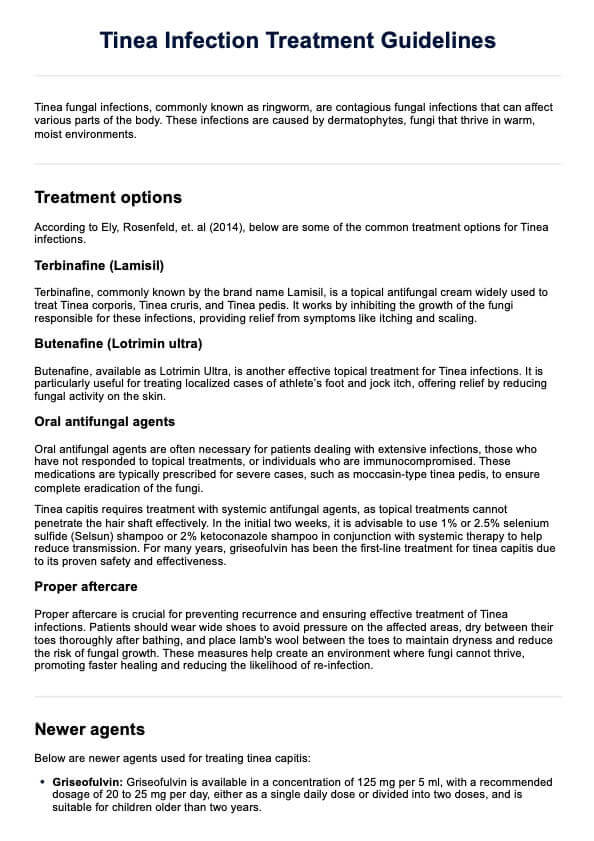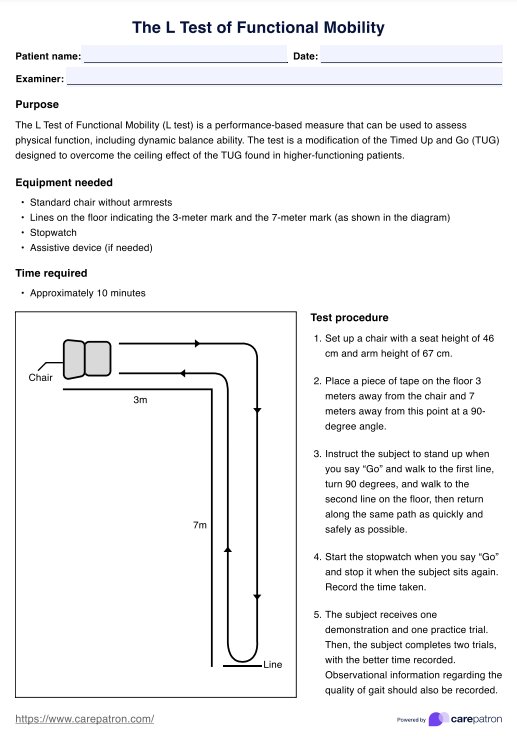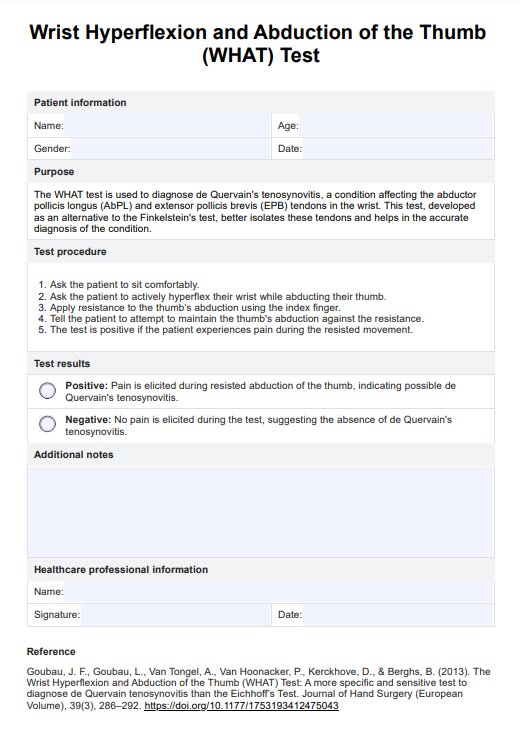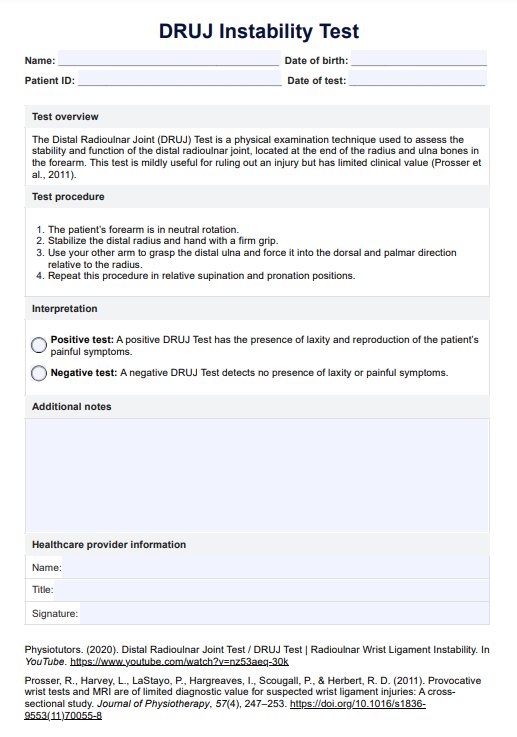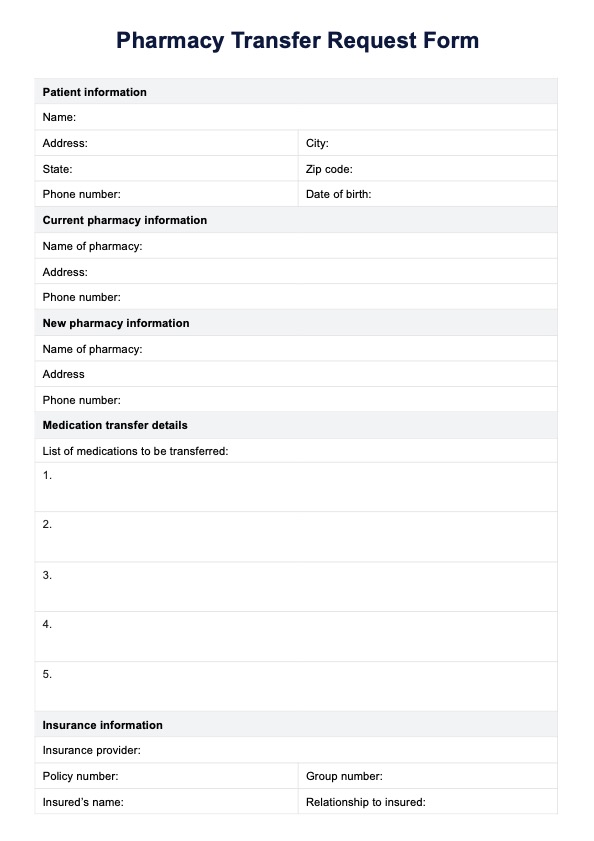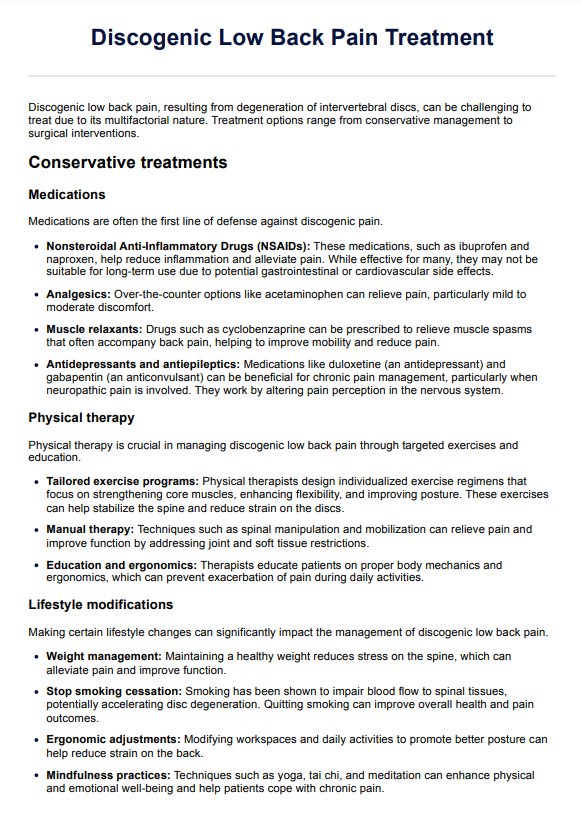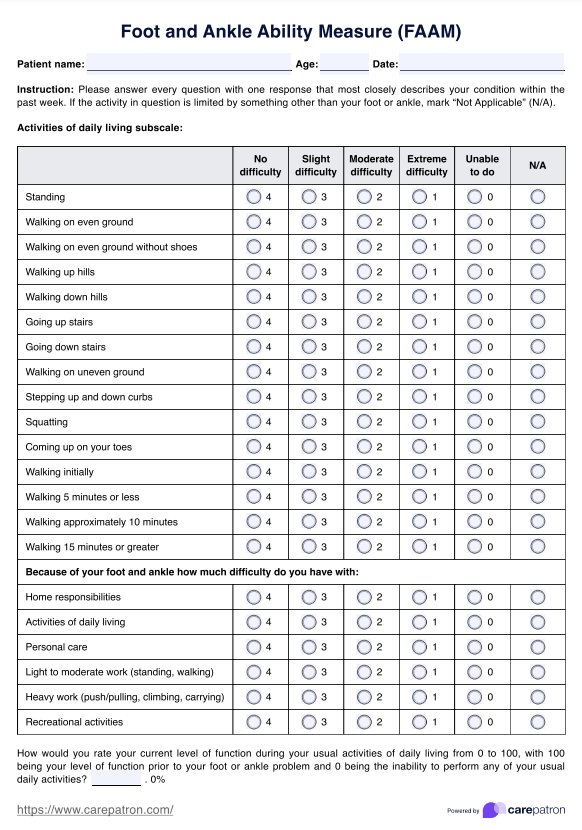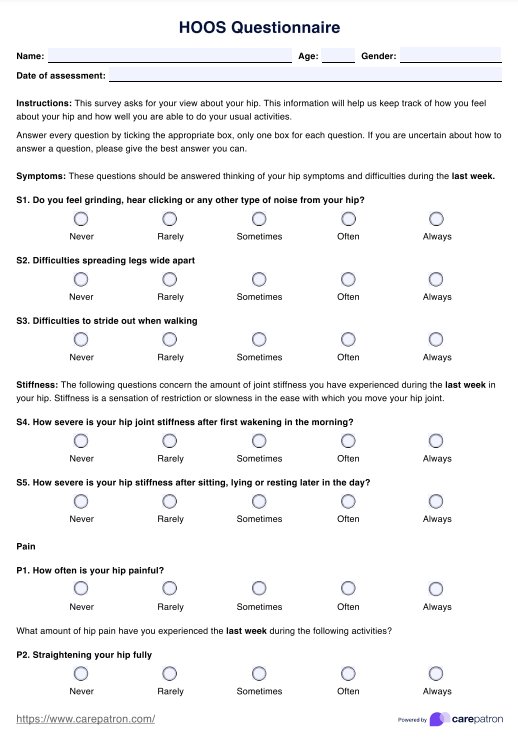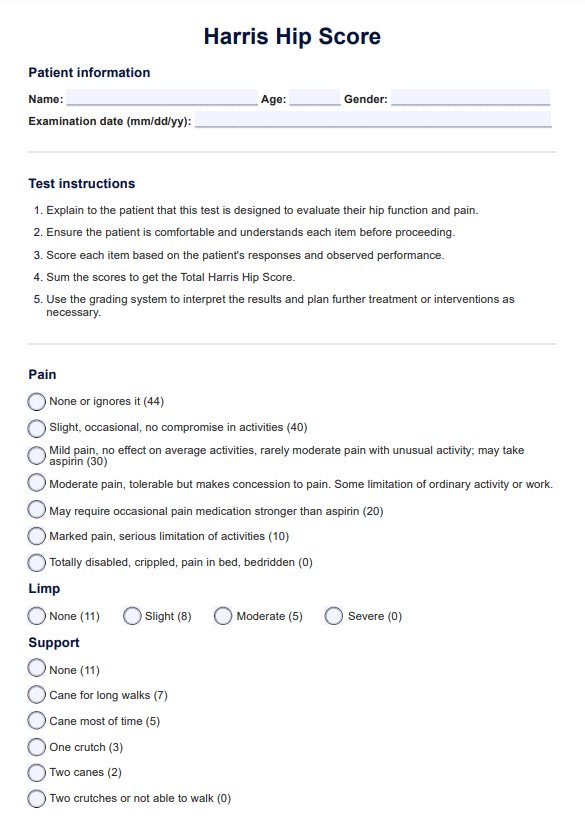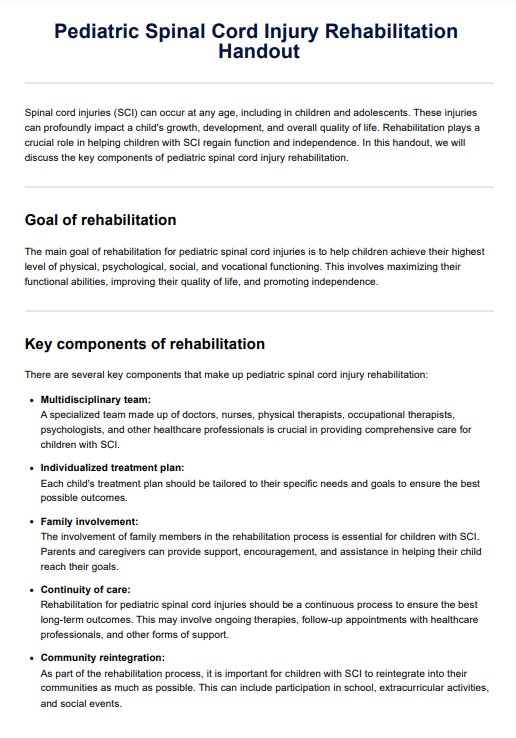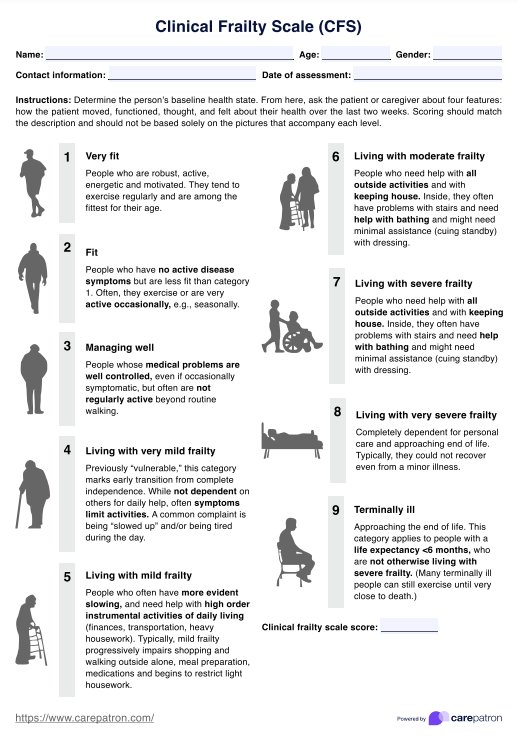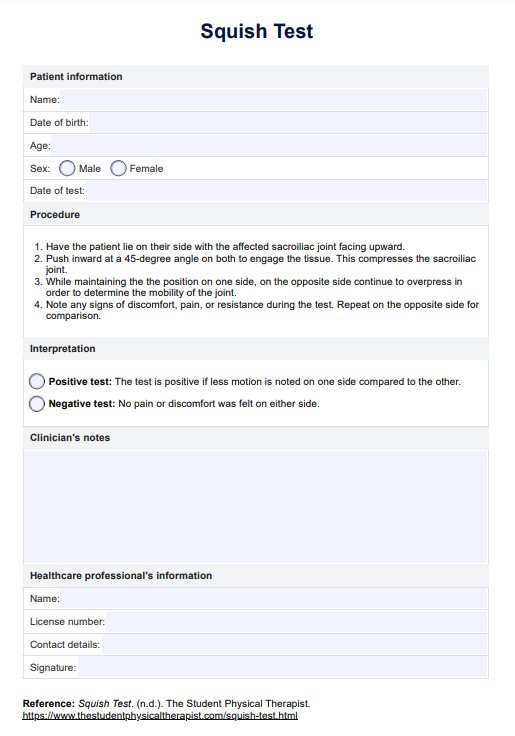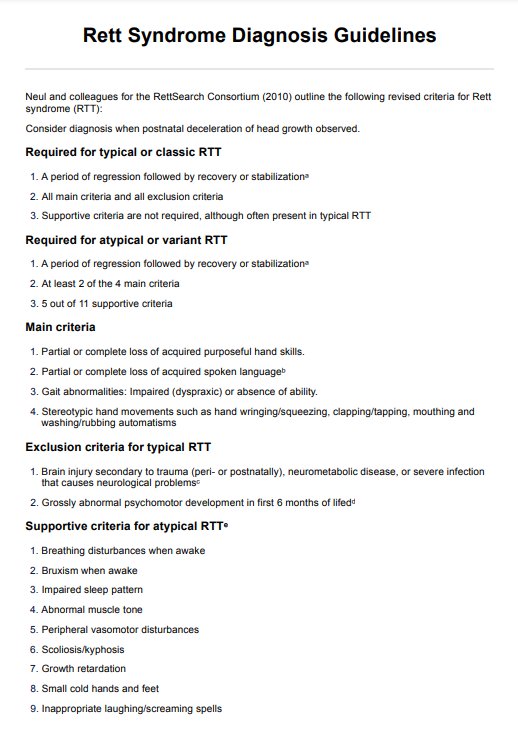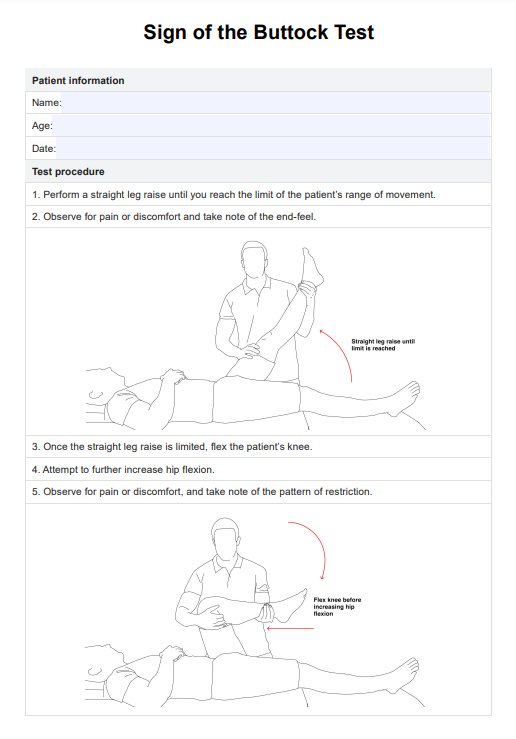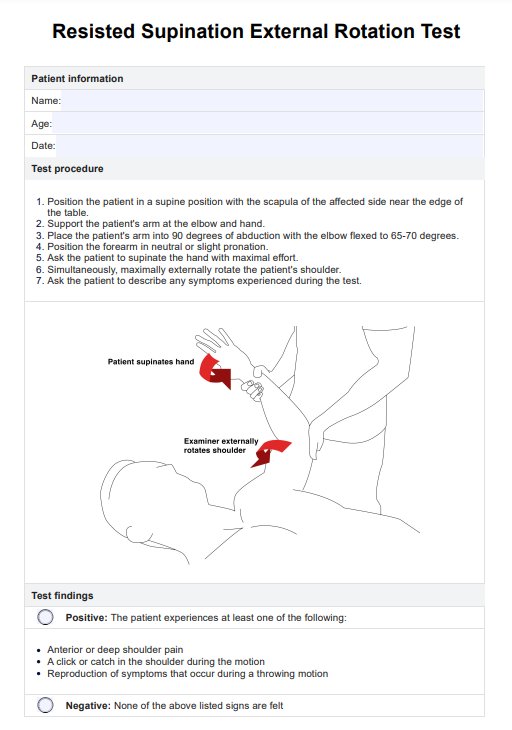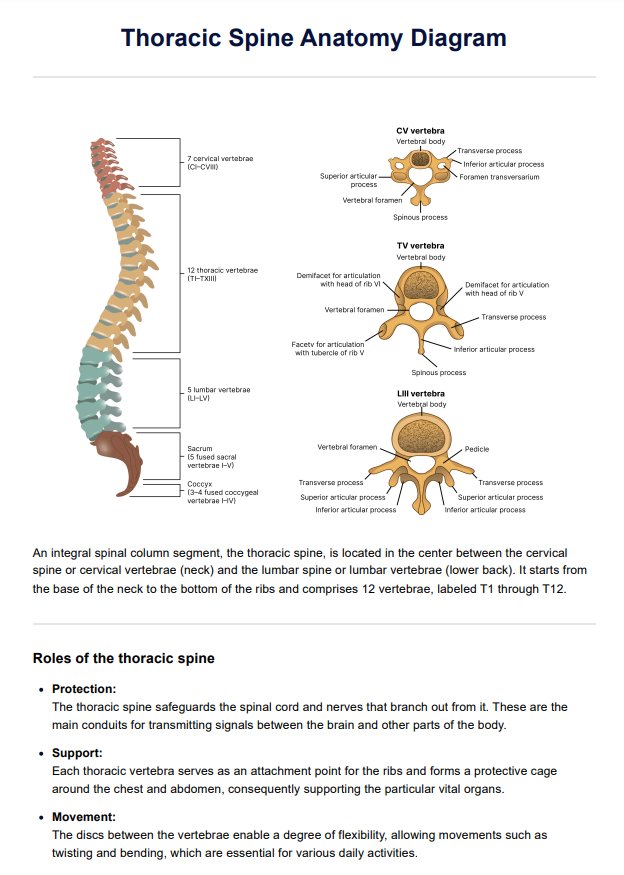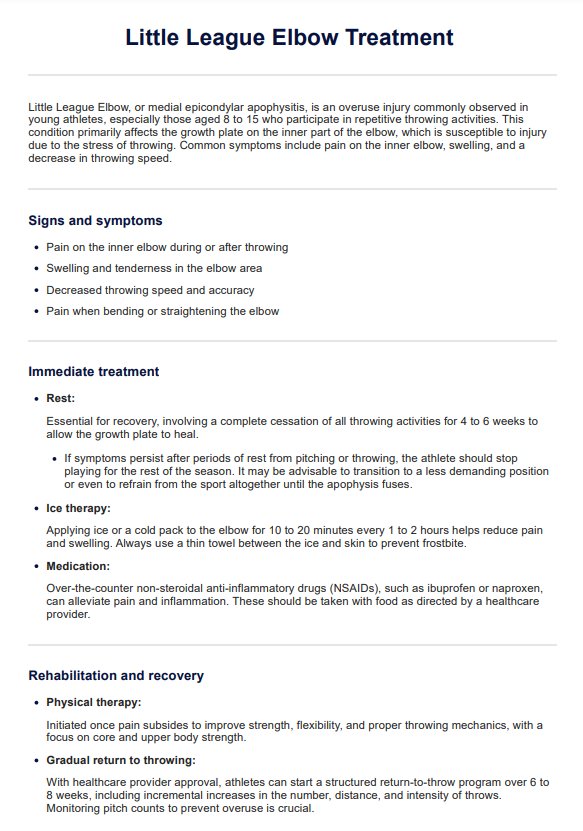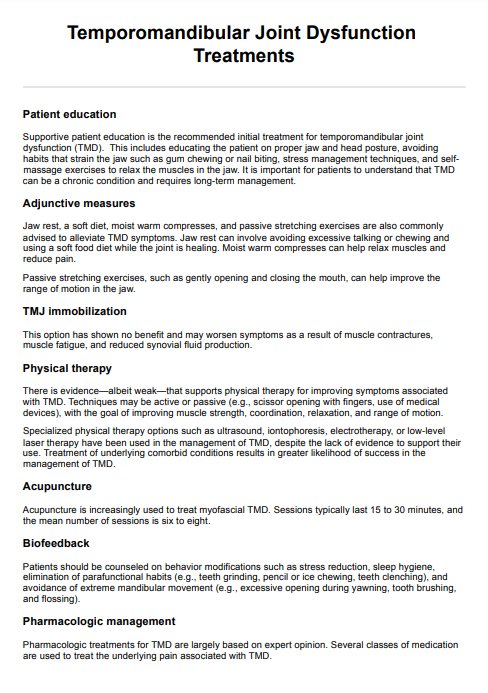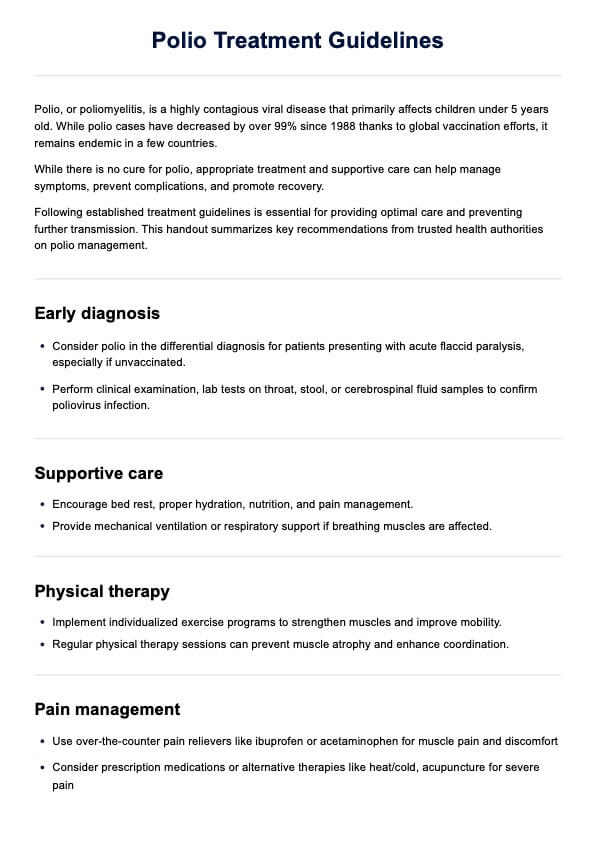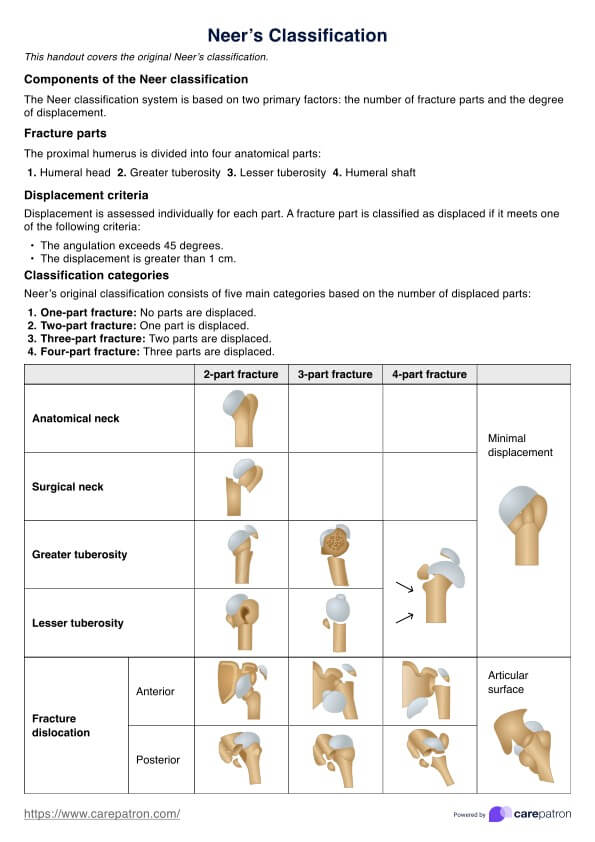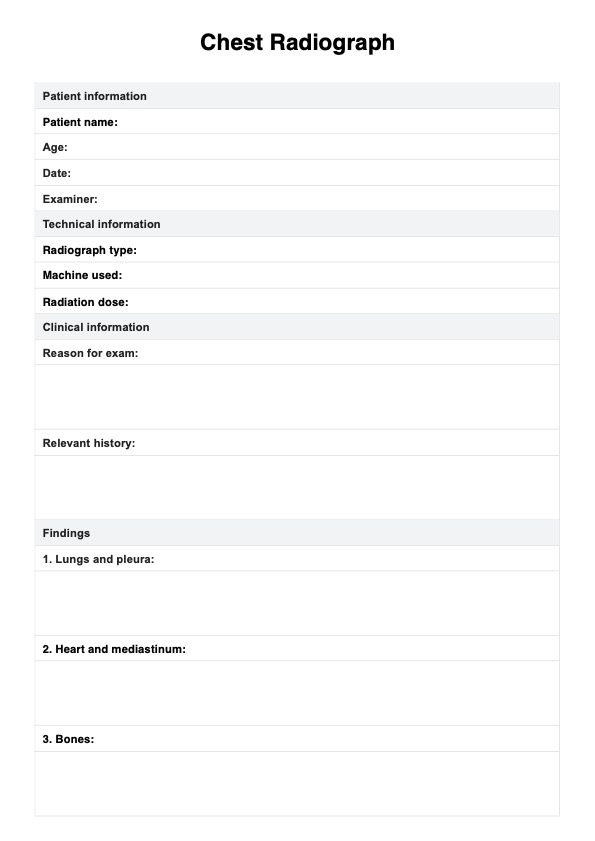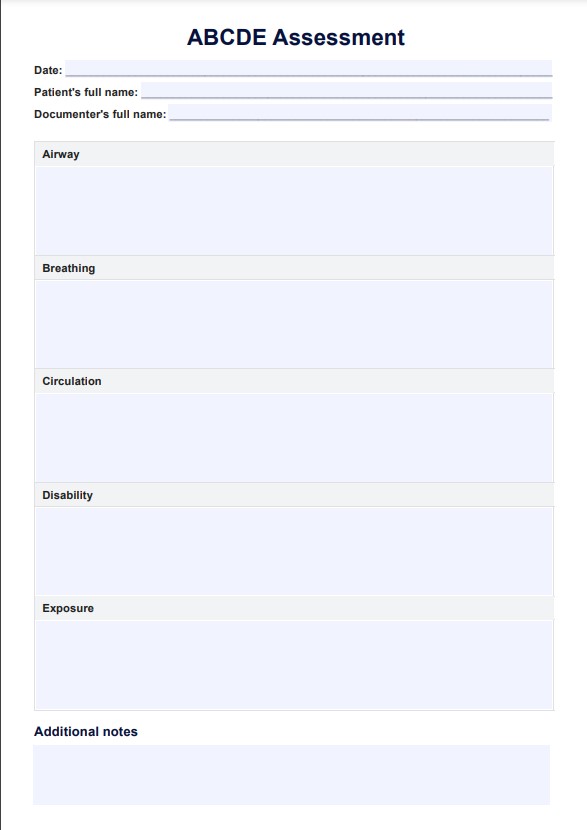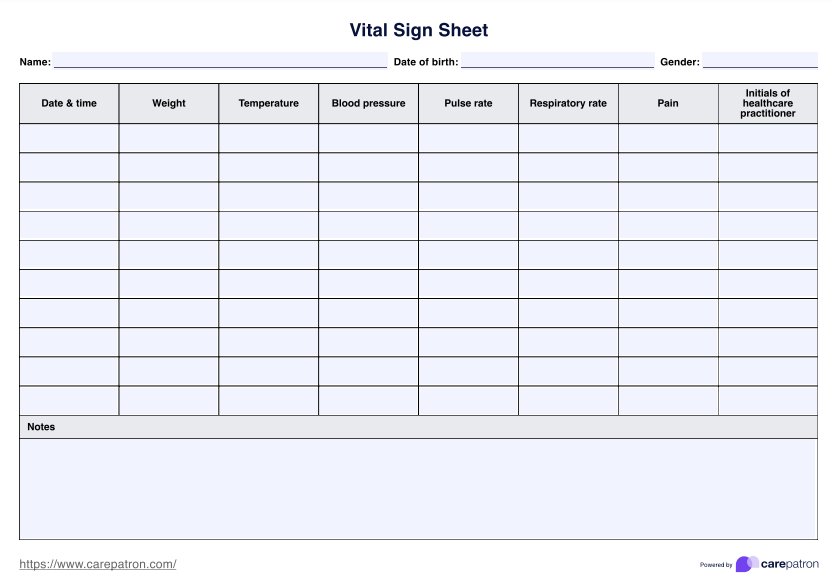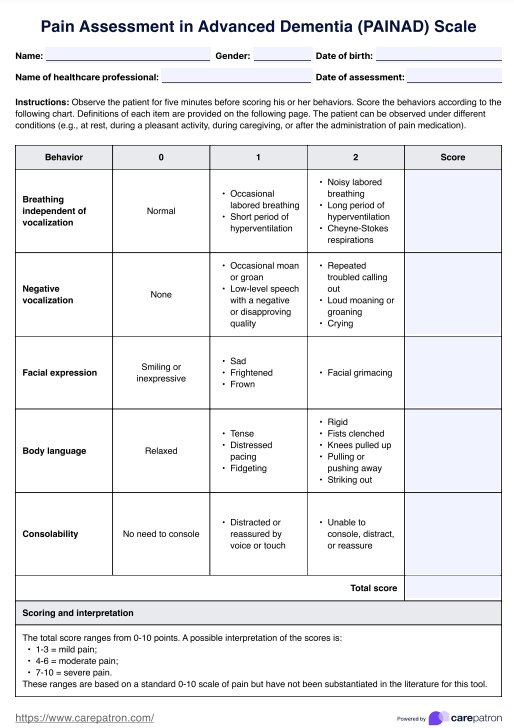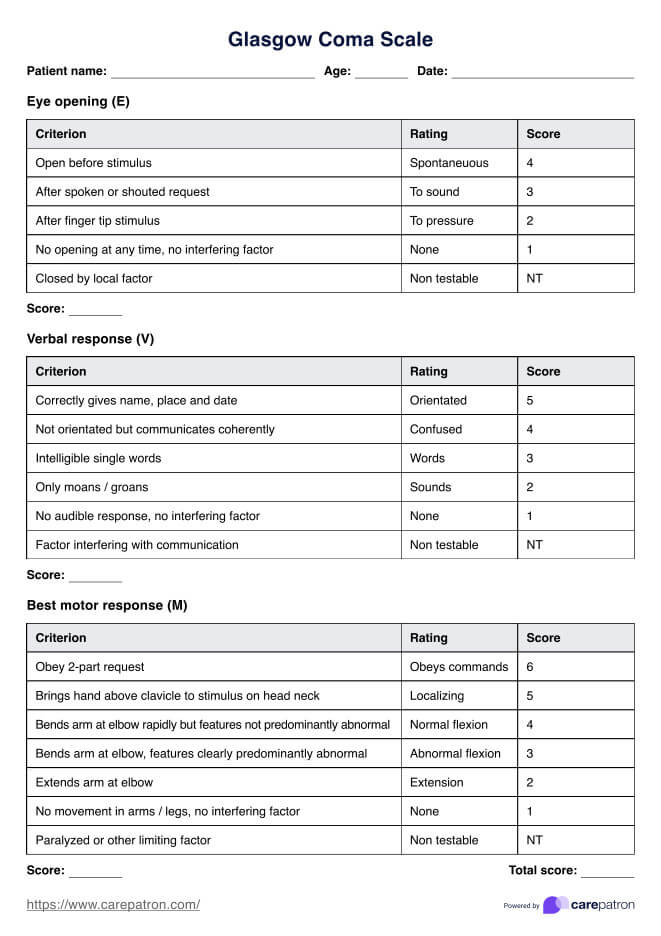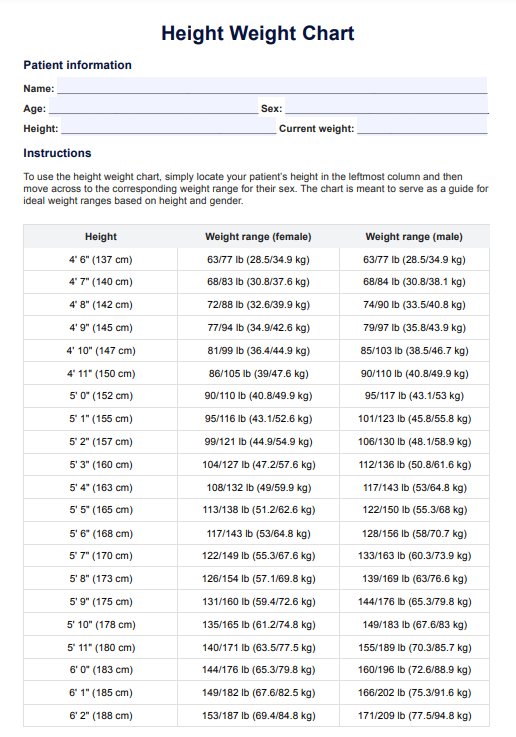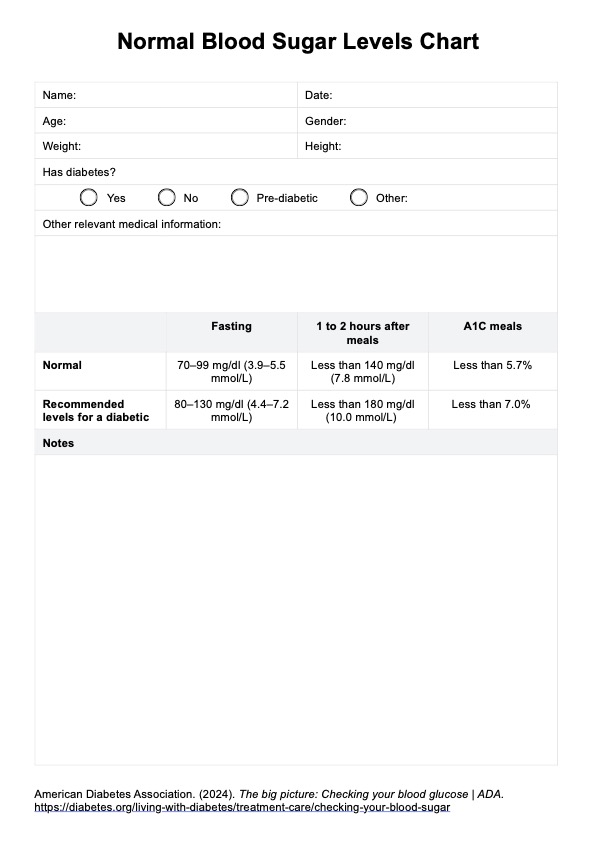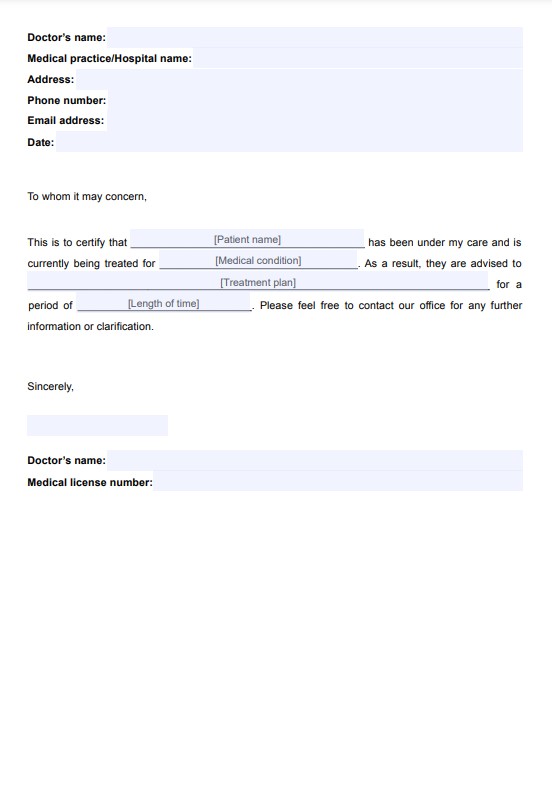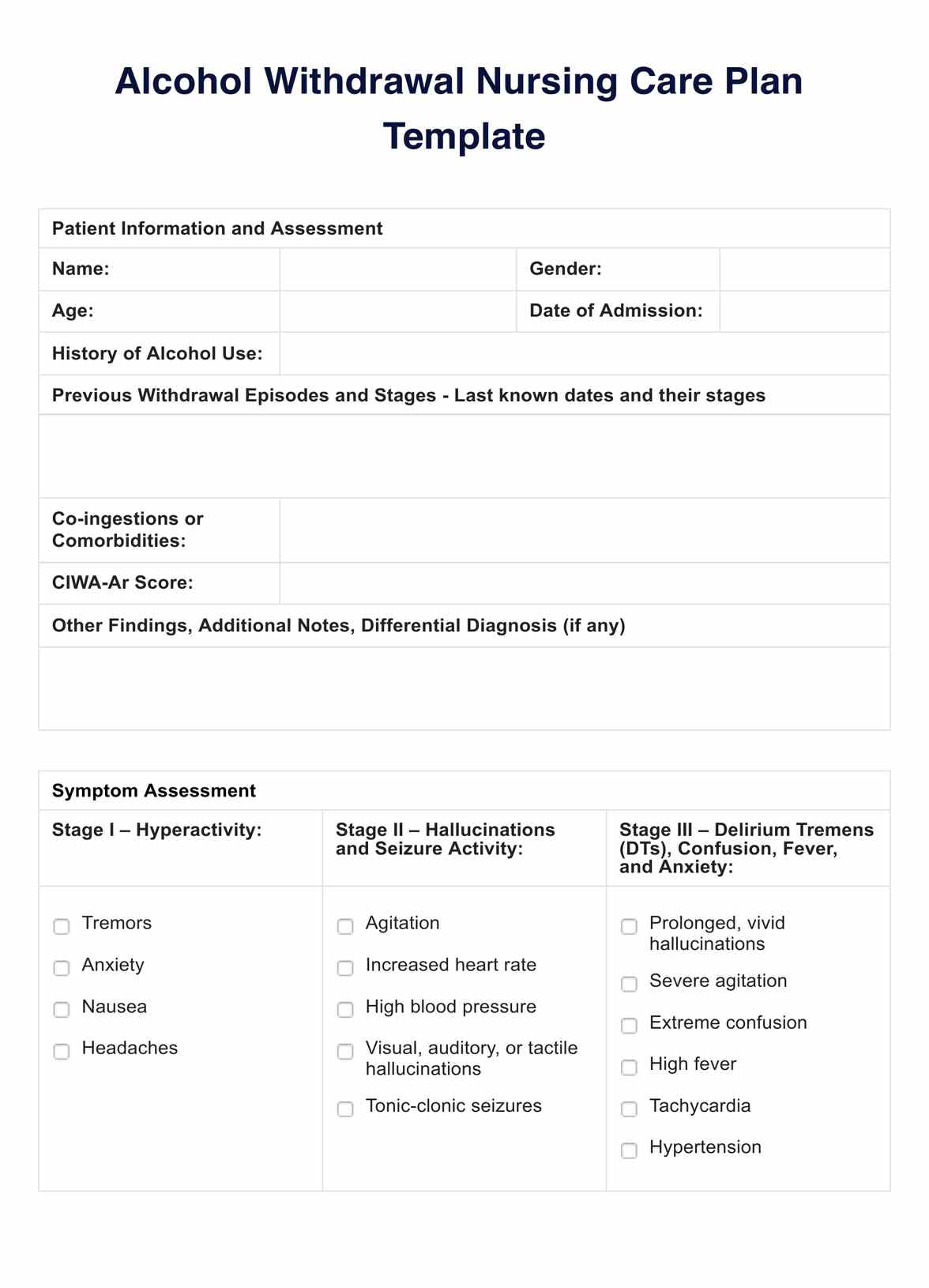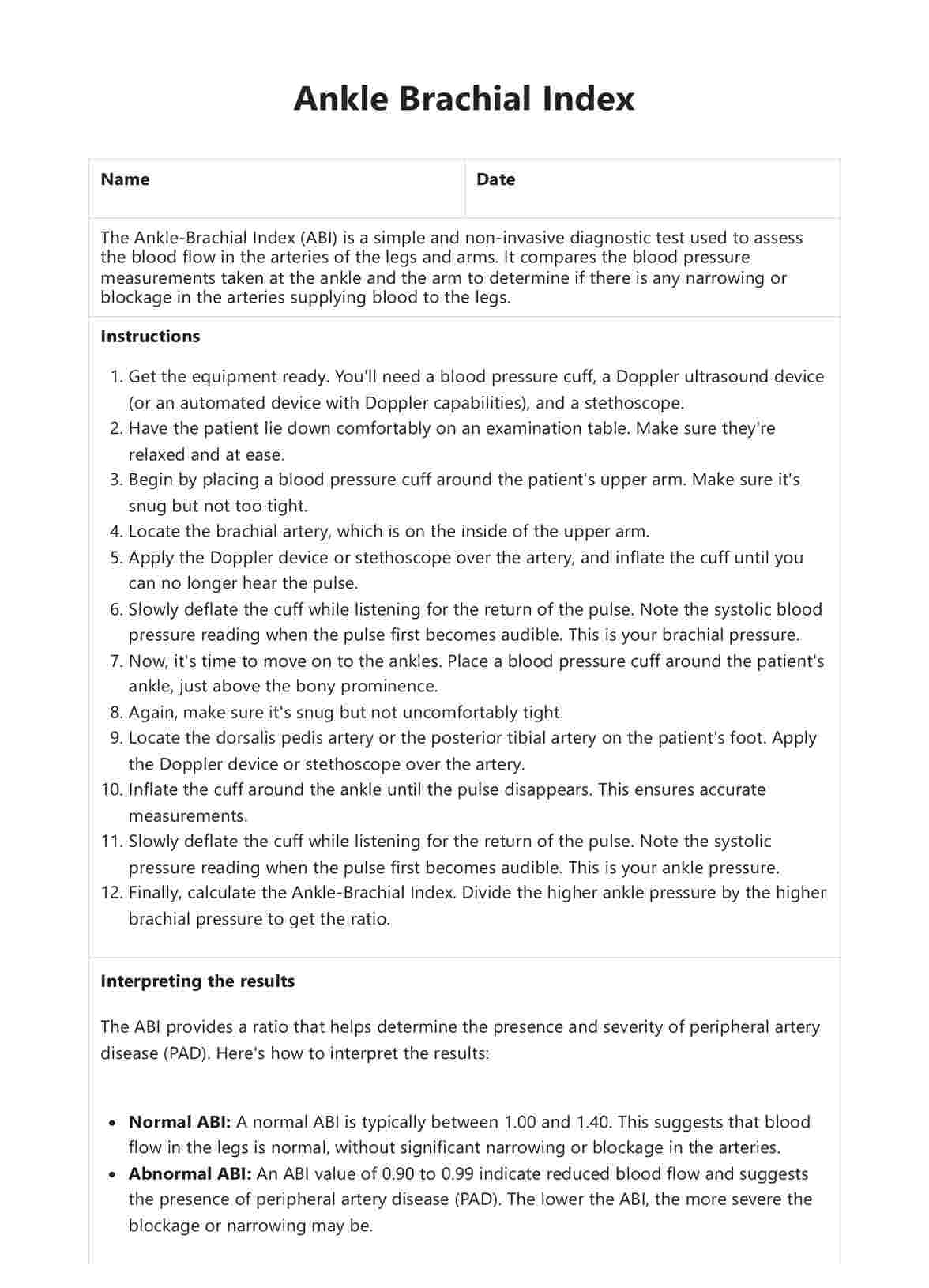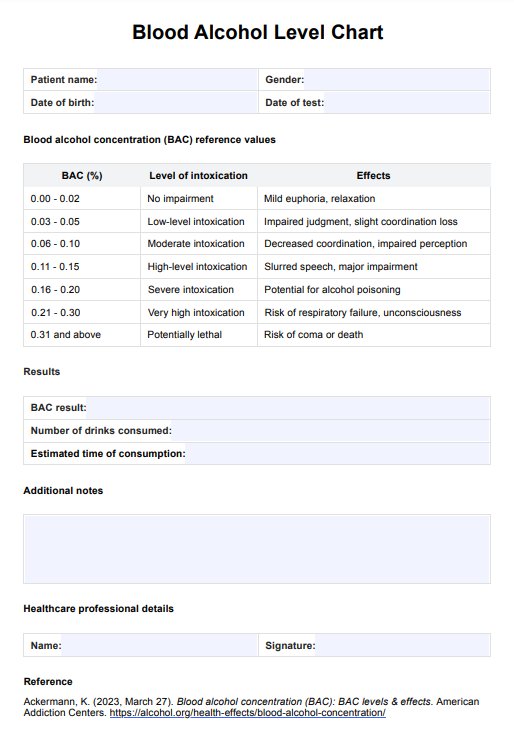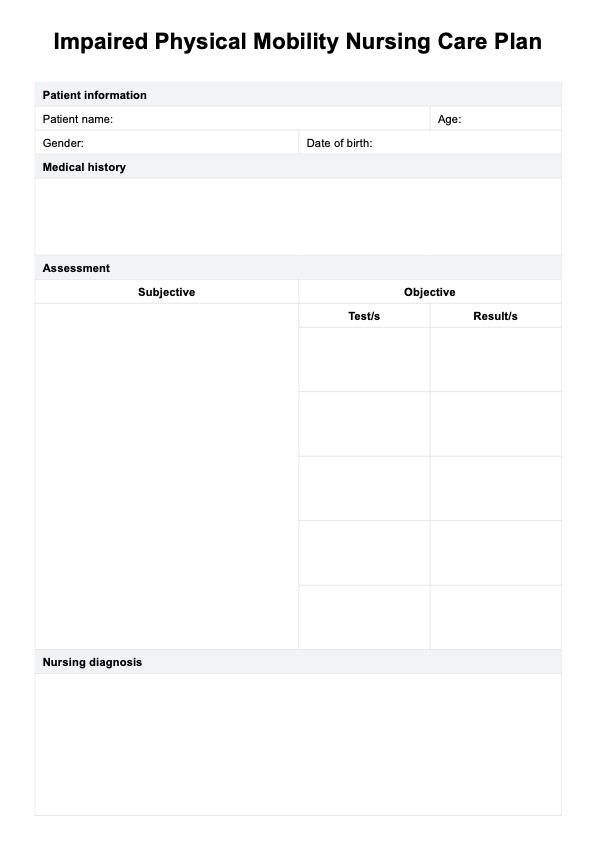EGFR Blood Test
Make eGFR Blood Test documentation simple and efficient. Access our template to record patient results accurately and effectively.


What is an eGFR Blood Test?
Our kidneys have small filters called glomeruli. Their function is to assist the kidneys in getting rid of toxins in our blood. When medical professionals discuss the estimated glomerular filtration rate (eGFR), they refer to the amount of blood the glomeruli can filter every minute. They use this to monitor the kidneys and determine any potential kidney problems a patient has.
They measure this by conducting an eGFR Blood Test, often part of metabolic panels, which are comprehensive assessments that examine the functioning of the kidneys and liver, fluid balance, and electrolyte levels.
If a patient has kidney problems, there is a good chance that the glomeruli's filtering capabilities are negatively impacted, which means they don't filter toxins at the rate they usually do.
This test is one of the go-to tests for patients who present themselves with the following symptoms:
- They feel weak and fatigued
- They have shortness of breath
- They pee frequently
- Their pee is foamy or has blood
- They feel nauseous and vomit from time to time
- Their ankles, hands, or feet are swollen
- They have muscle cramps and spasms
- Their skin is dry and itchy
EGFR Blood Test Template
EGFR Blood Test Example
How does our eGFR test form work?
The eGFR test template helps track and document the eGFR for patients. It assists in monitoring kidney health, especially for conditions like chronic kidney disease (CKD) and high blood pressure.
Step 1: Download the template
You can access the template from this guide. Click "Use template" to open it within the Carepatron platform, where you can customize this tool according to your needs. You can also click "Download" to get a free fillable PDF copy of this form.
Step 2: Fill in patient information
Enter the patient's personal details, such as their full name, date of birth, gender, and contact information. Include emergency contact details and the patient’s unique ID (if applicable). Ensure all fields are filled out accurately for clear identification. This will help track the patient's kidney health over time, particularly for those at risk of needing a kidney transplant.
Step 3: Complete test specifics
Provide specific test details, including the date of the test and the reason for performing the test. The eGFR test is typically conducted by collecting a blood sample, which is then analyzed to assess kidney function and estimate how well the kidneys are filtering waste and excess fluid from the blood.
Step 4: Record test results and remarks
After receiving the test results, record the eGFR value and interpret the result based on the reference ranges provided. Include any additional remarks, such as recommendations for follow-up or concerns.
How are the results of an eGFR Blood Test interpreted?
When healthcare professionals measure eGFR, they do so by milliliters of cleansed blood per minute per body surface. This is expressed as mL/min/1.73m².
As a reference, the normal eGFR levels based on age are as follows (National Kidney Foundation, 2022):
- For those aged 20 to 29: 116 mL/min/1.73m²
- For those aged 30 to 39: 107 mL/min/1.73m²
- For those aged 40 to 49: 99 mL/min/1.73m²
- For those aged 50 to 59: 93 mL/min/1.73m²
- For those aged 60 to 69: 85 mL/min/1.73m²
- For those aged 70+: 75 mL/min/1.73m²
Please note that eGFR will decline as we age.
As for reading the results, please refer to these designations (American Kidney Fund, 2025; National Kidney Foundation, 2022):
- eGFR of 90+: There is possible kidney damage, but the kidney is still functioning normally.
- eGFR of 60 to 89: There is kidney damage and a mild loss of kidney function.
- eGFR of 45 to 59: There is a mild to moderate loss of kidney function.
- eGFR of 30 to 44: There is moderate to severe loss of kidney function.
- eGFR of 15 to 29: There is a severe loss of kidney function.
- eGFR of less than 15: Kidney failure
Depending on the results, determine the next set of tests to conduct to confirm the kidney disease and its causes. Treatment will depend on the full results.
When is it best to conduct an eGFR Blood Test?
Here are some instances when an eGFR Blood Test is needed:
Examinations for potential kidney disease/kidney failure
As mentioned earlier, eGFR Blood Tests are meant to evaluate patients who might have kidney damage, disease, or kidney failure if they present with symptoms such as weakness, fatigue, frequent urination, nausea, muscle cramps, and muscle spasms.
This test will help determine whether tests such as urinalysis, kidney CT scans, kidney biopsies, and creatine clearance tests are necessary.
Monitoring medication side effects and patient condition
Certain medications might affect the kidneys, especially if the prescribed dosage is not followed, whether on purpose, neglect or by accident. You might require patients to take routine eGFR Blood Tests to check if the medication they administered and prescribed is negatively impacting the kidneys.
Not only that, but they will use this test to see if kidney function is the same or if it's gradually declining. Make adjustments to treatment plans depending on the results.
Evaluating patients before specific procedures
The eGFR Blood Test is also conducted to screen patients to determine whether they're healthy enough to undergo specific medical and surgical procedures. Some medications can have adverse effects on the kidney, but these medications might be needed during these procedures.
If there is already a moderate or severe loss of kidney function due to kidney disease, then they might not be eligible to undergo such procedures.
References
American Kidney Fund. (2025, January 3). Blood test: eGFR. https://www.kidneyfund.org/all-about-kidneys/tests/blood-test-egfr
National Kidney Foundation. (2022, July 13). Estimated glomerular filtration rate (eGFR). https://www.kidney.org/kidney-topics/estimated-glomerular-filtration-rate-egfr
Commonly asked questions
It is part of the diagnostic process but should not be used to diagnose specific conditions. It should point to the possibility of specific kidney problems, and the tests that follow it should narrow things down and confirm the specific problem.
As with all blood tests, a patient might feel a bit of pain when the professional pierces the blood drawing site with a needle. There might be pain and discomfort afterward, lasting for a few minutes to a few hours. Some people don’t feel any pain at all. It depends on the person’s pain tolerance.
In rare cases, there might be an infection. Professionals account for this by applying antiseptics to disinfect and clean the blood drawing site.
Kidney function can be restored to normal levels with proper treatment and appropriate lifestyle changes. If kidney function can’t be restored to a certain degree, then the best thing that healthcare professionals can do is create a treatment plan that maintains current kidney functioning. Medication that slows or halts the progression of kidney disease will also be administered and prescribed.
A creatinine test assesses kidney function by measuring how effectively the kidneys filter a waste product called creatinine.
A blood creatinine test measures the level of creatinine in the blood to evaluate kidney function. It’s often used to detect kidney issues or monitor conditions like digestive and kidney diseases.
Yes, a blood test can check blood sugar levels to screen for diabetes and assess kidney health through markers like creatinine.


